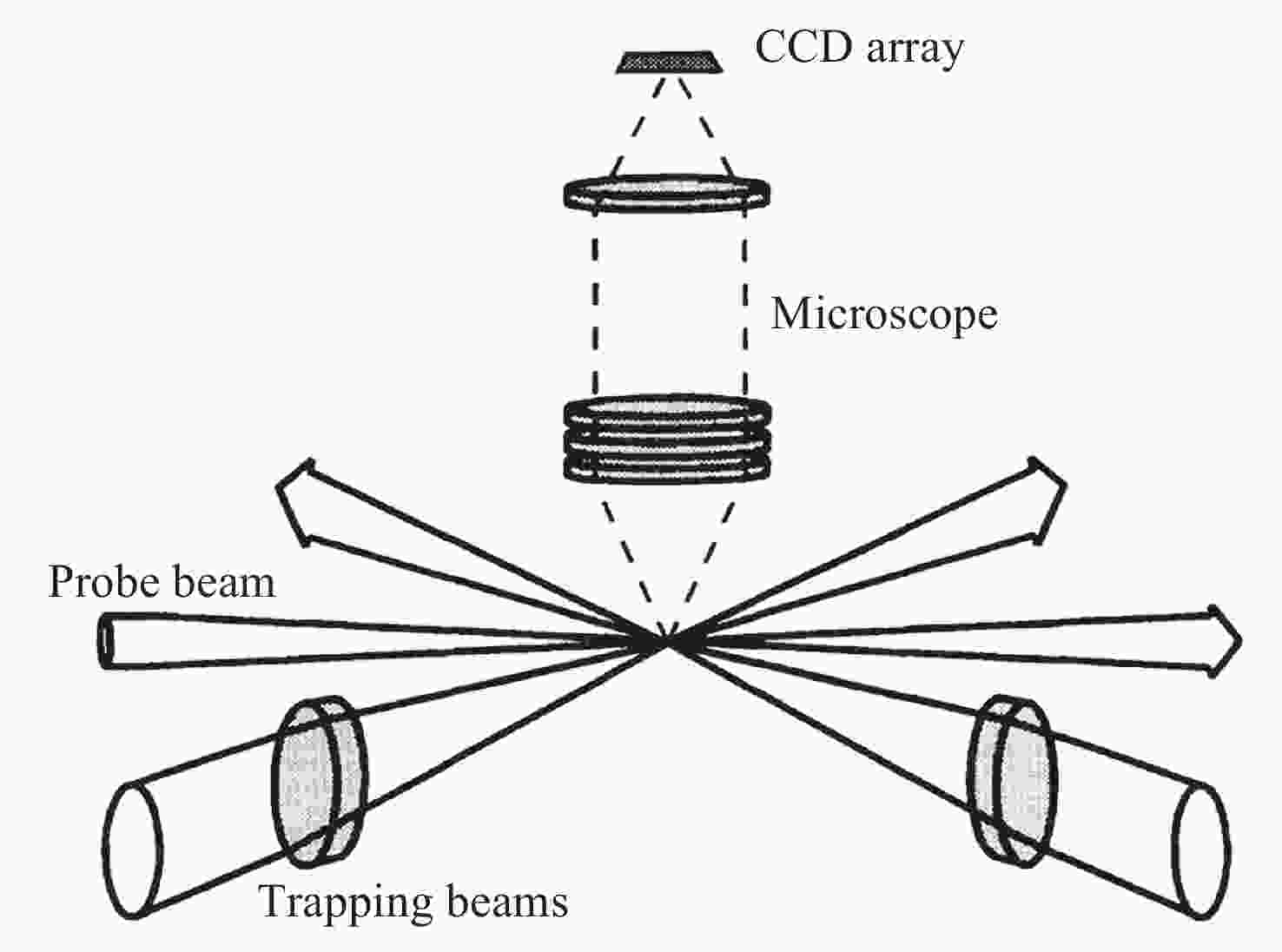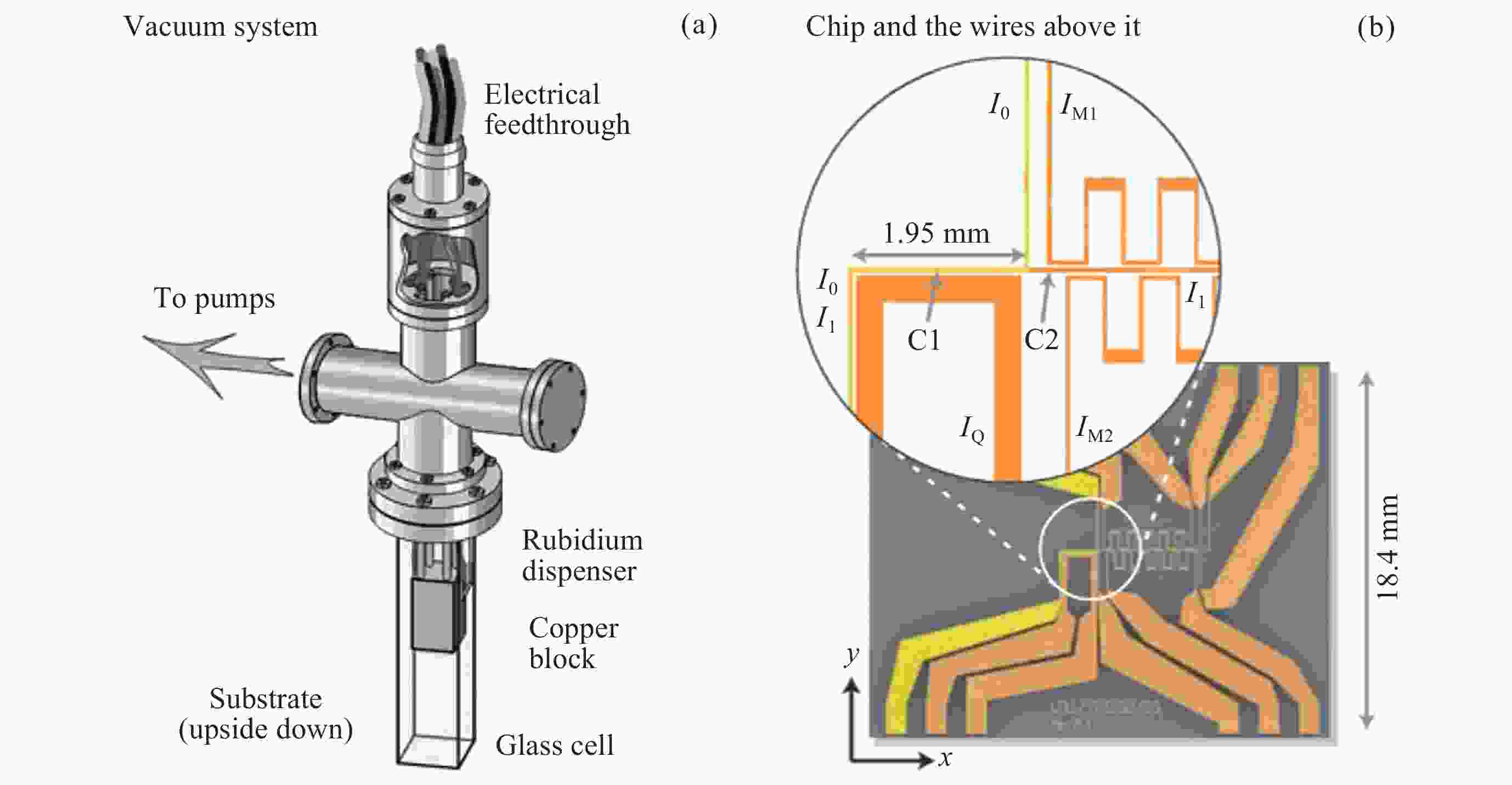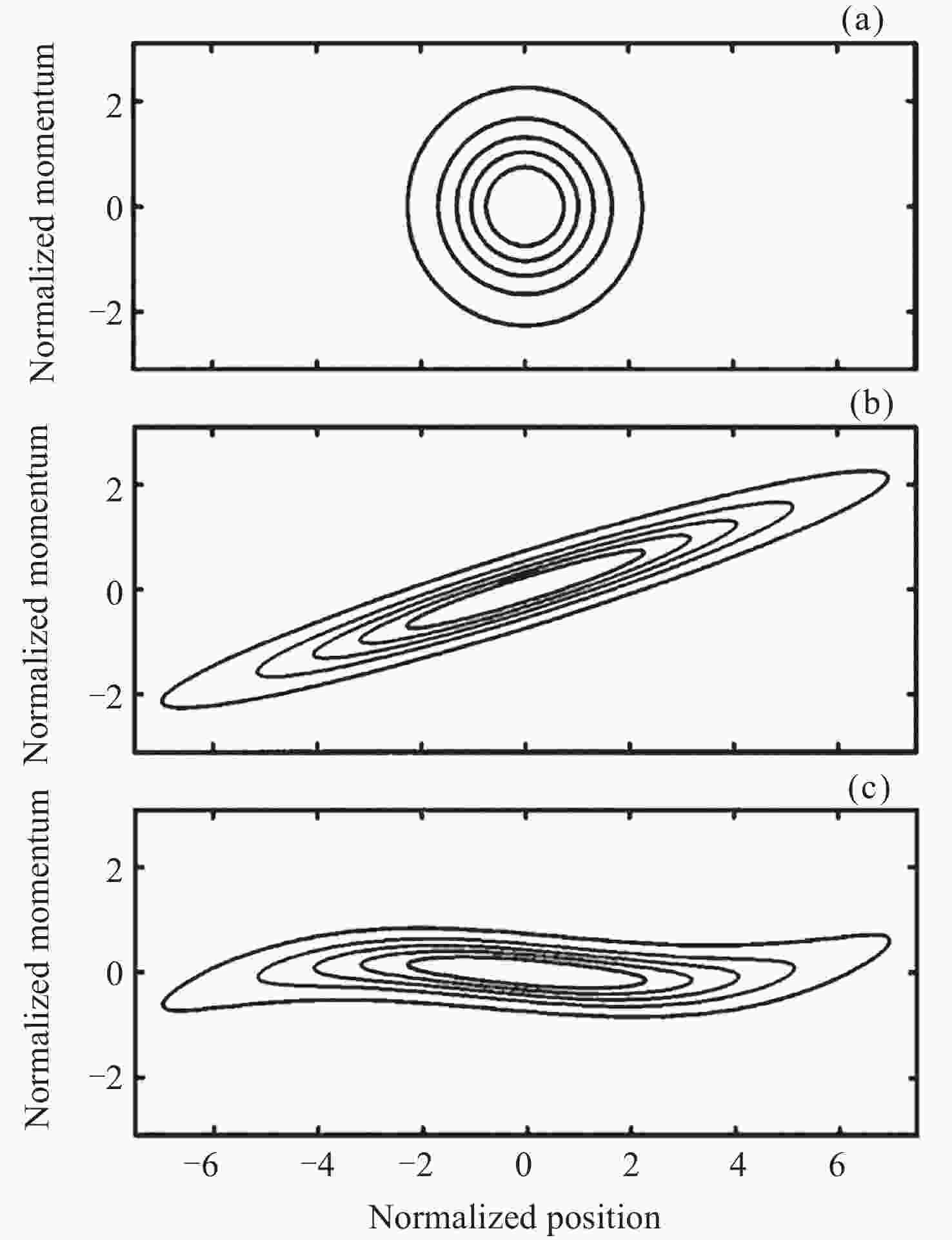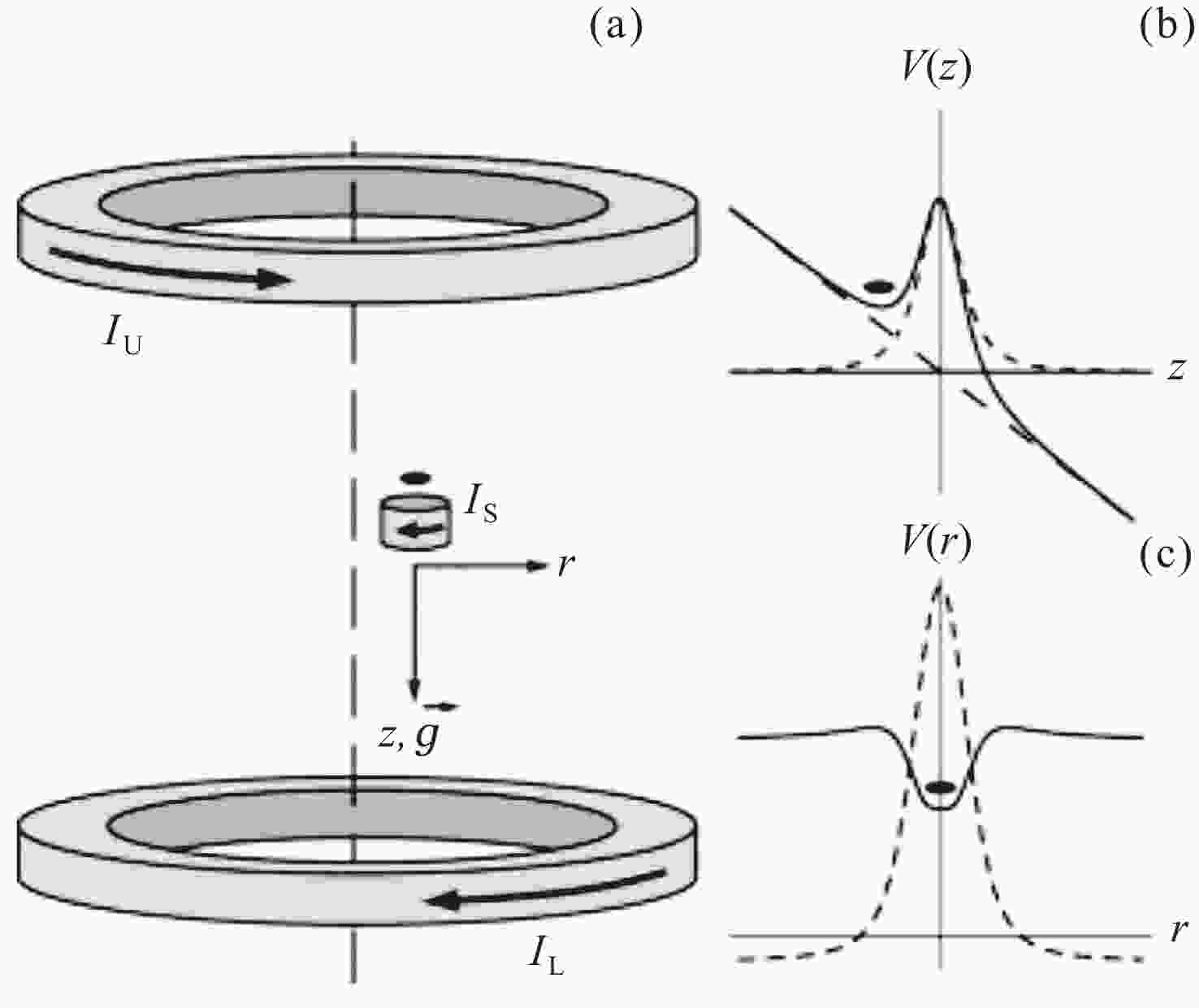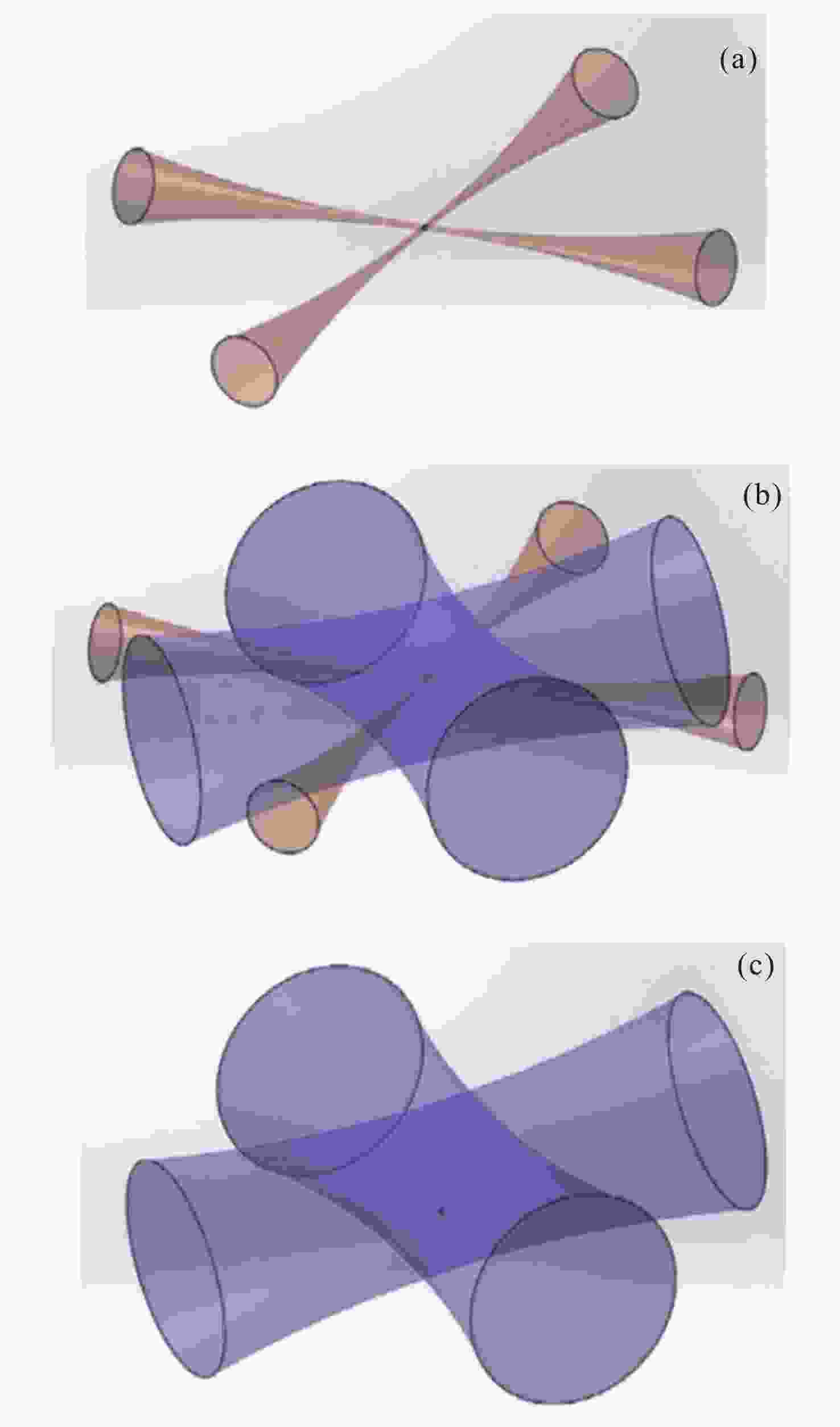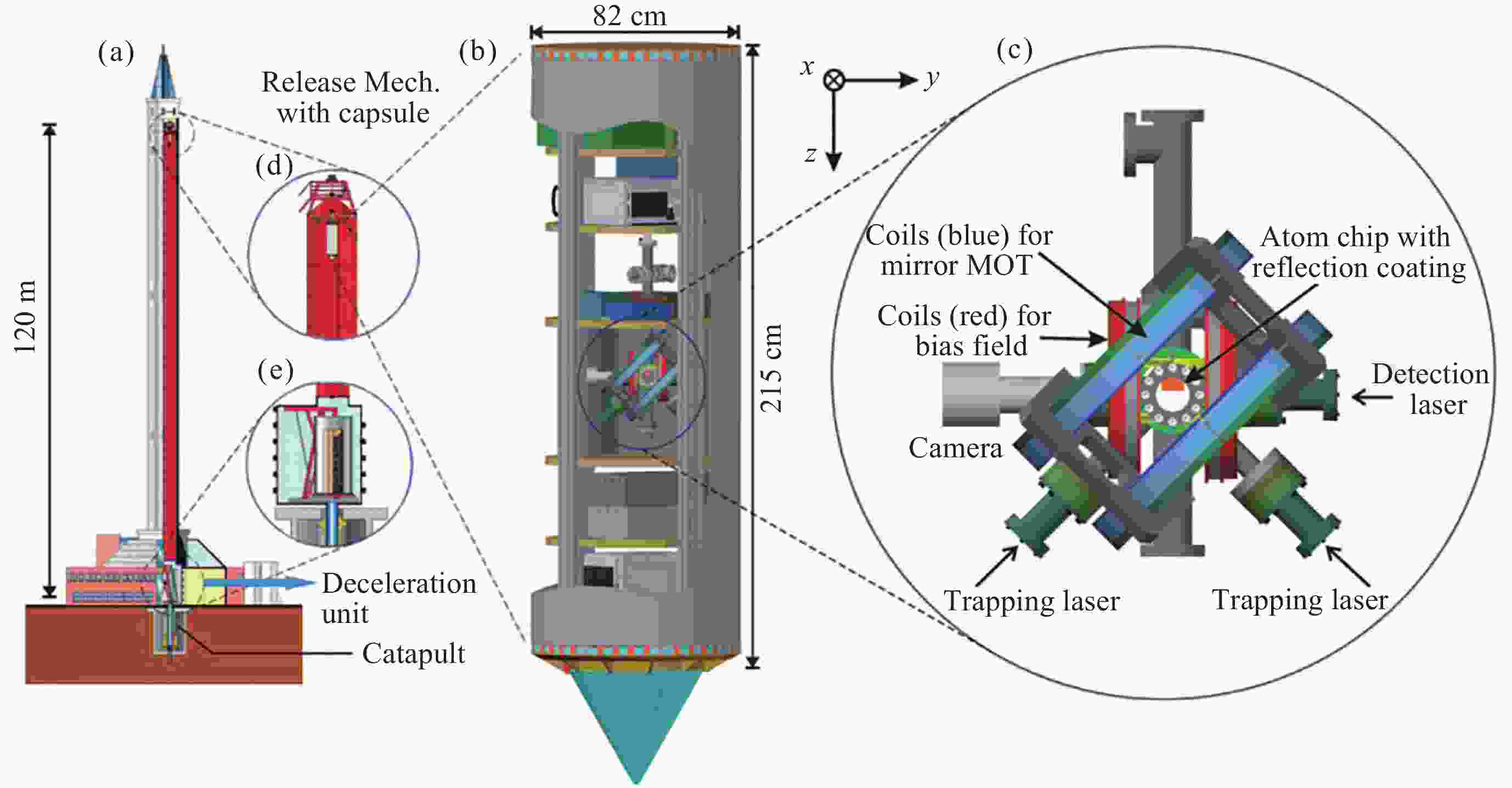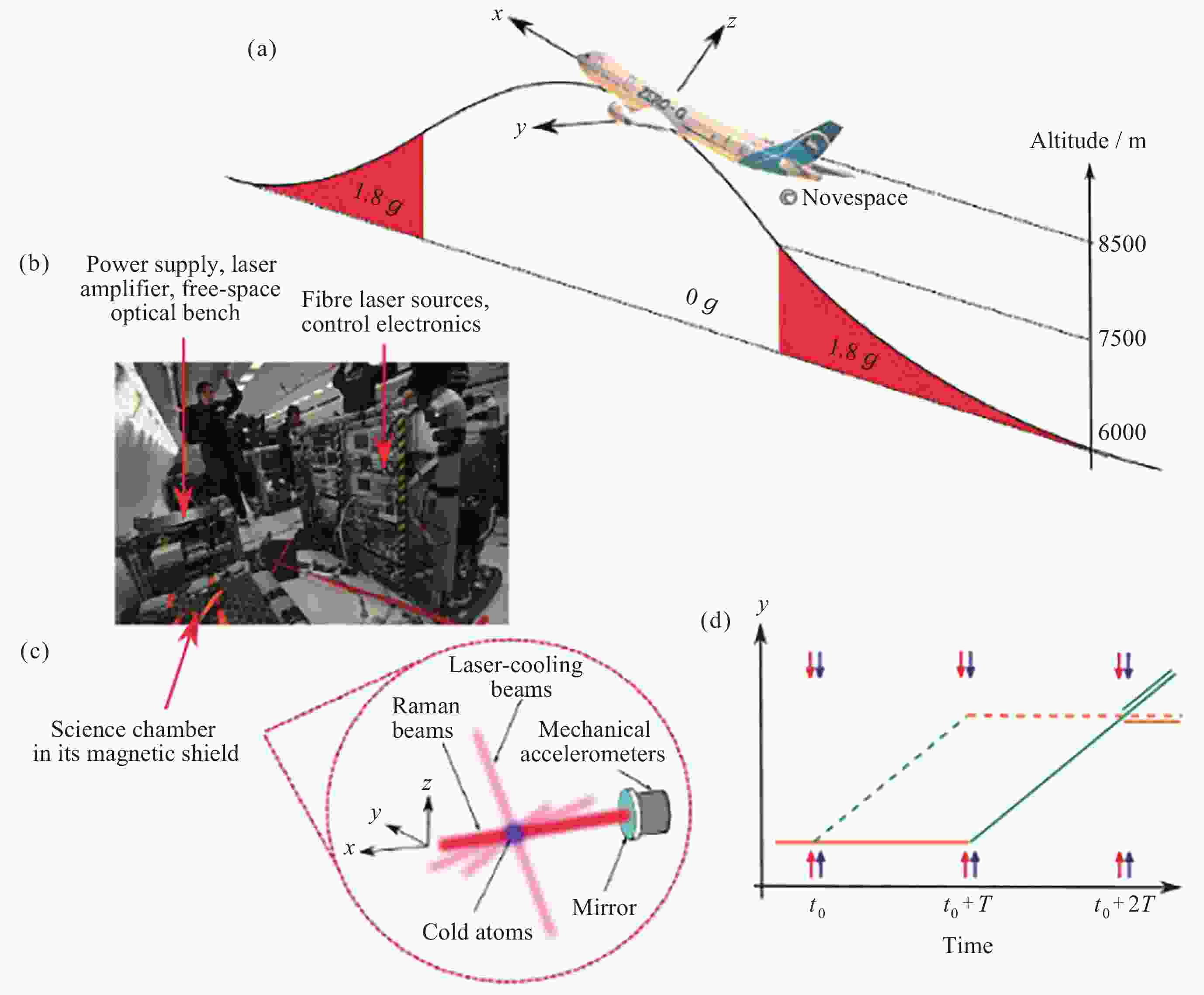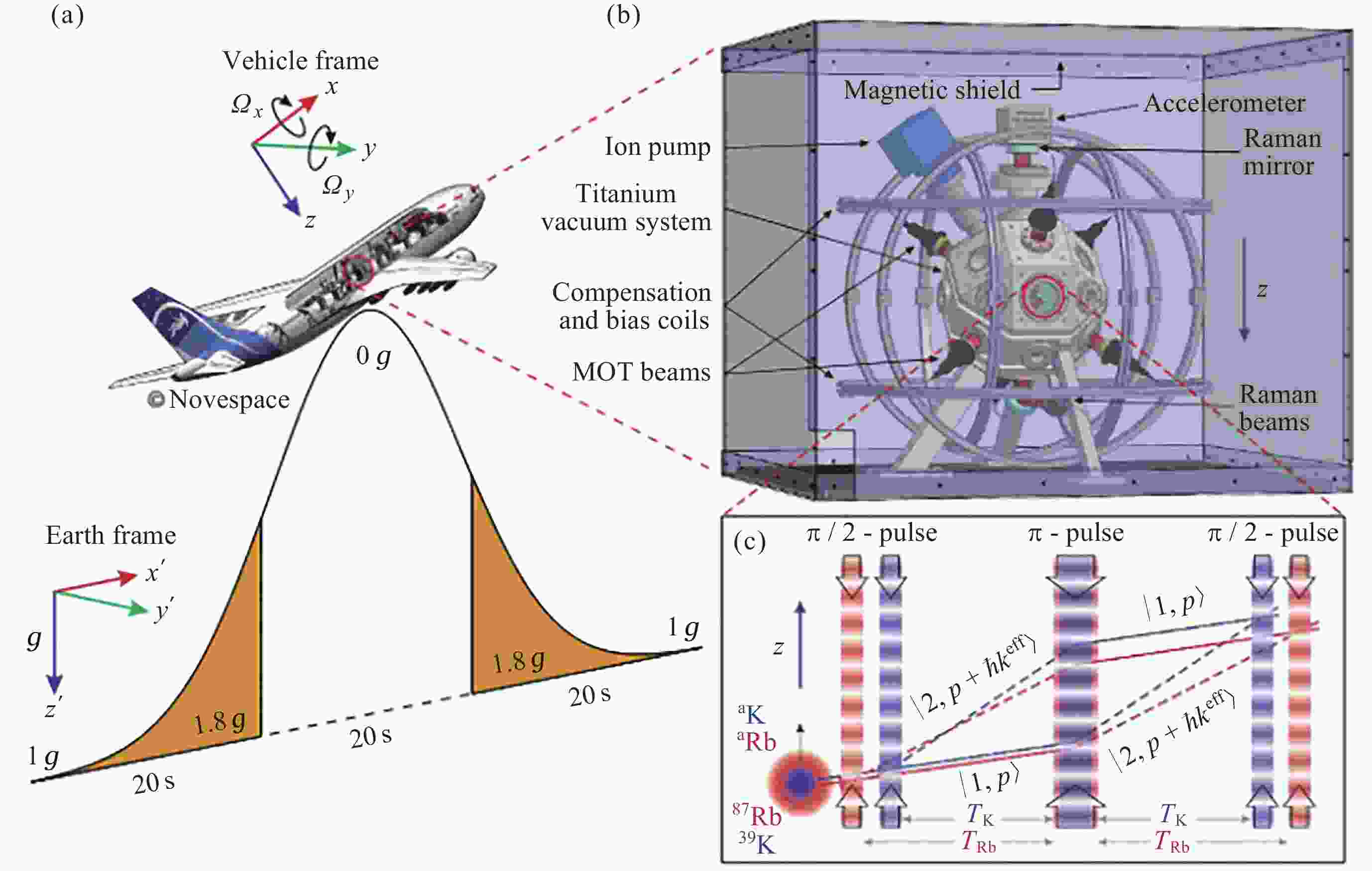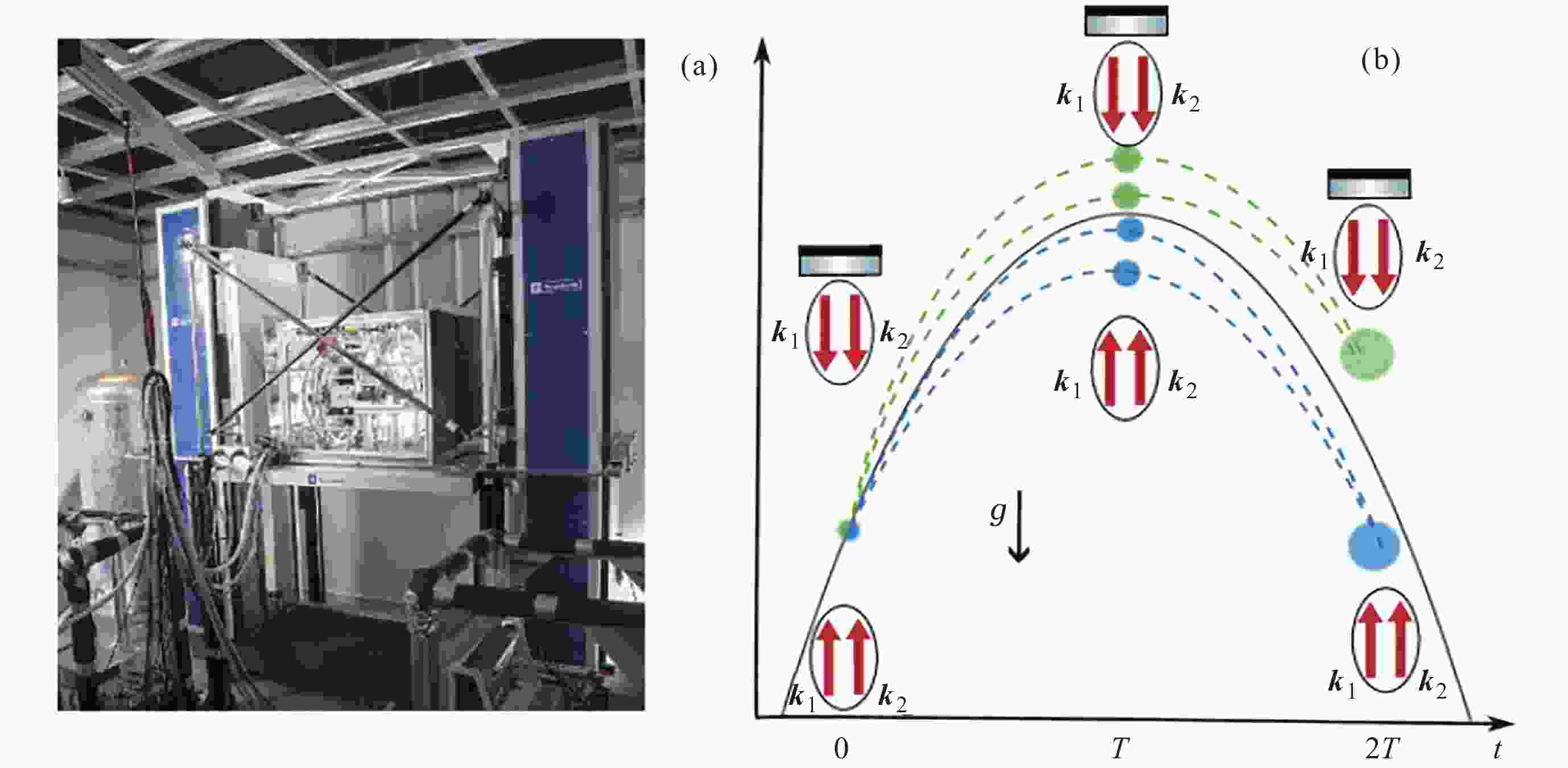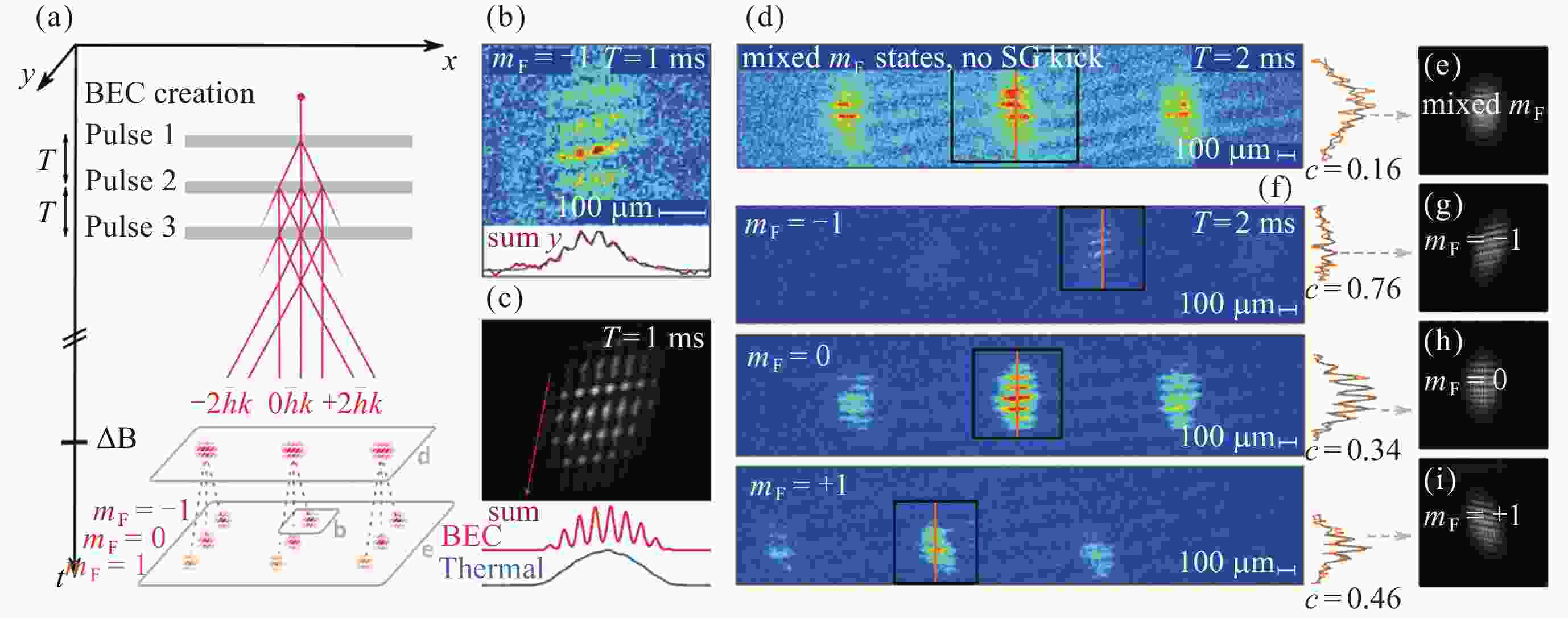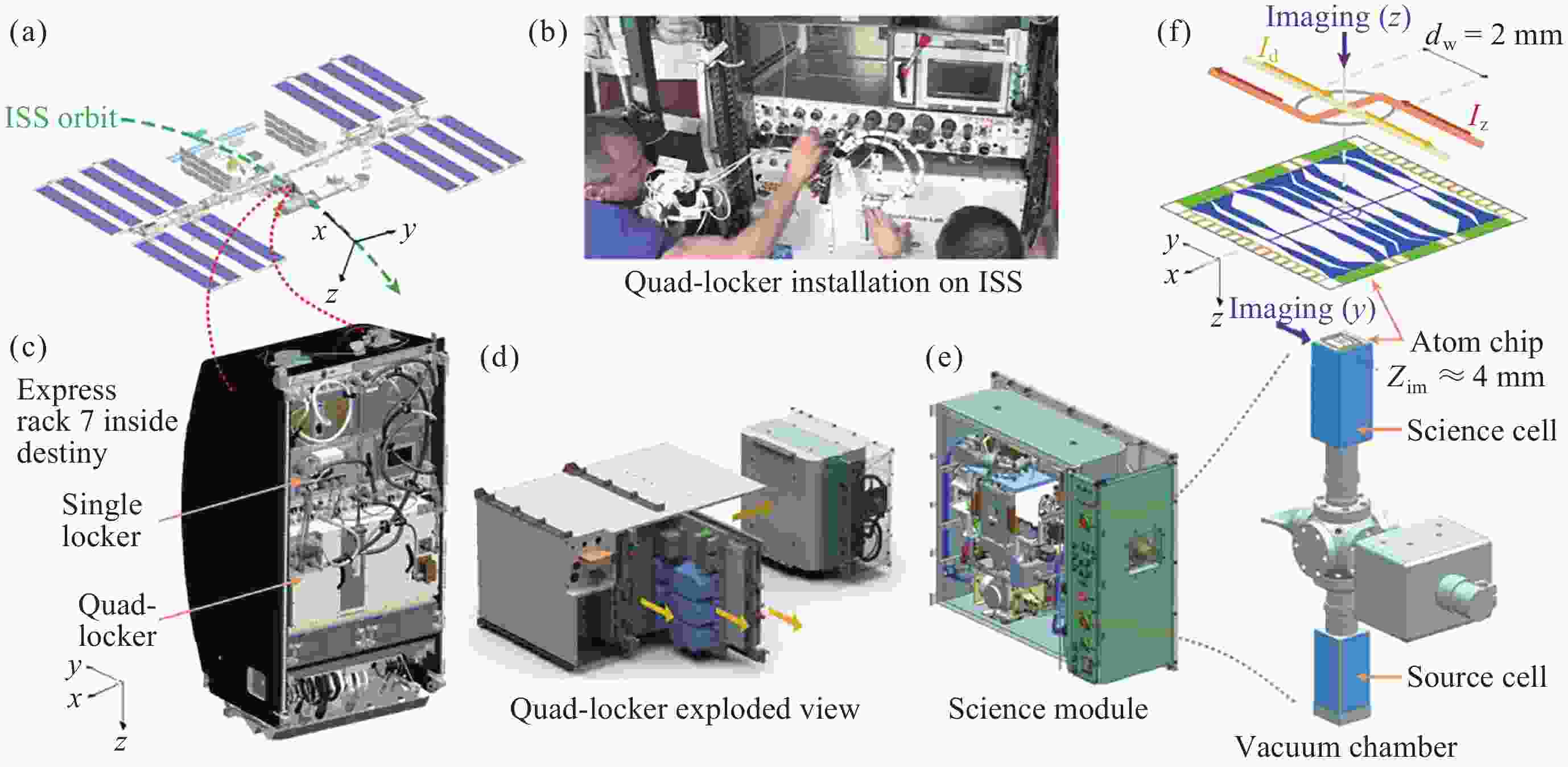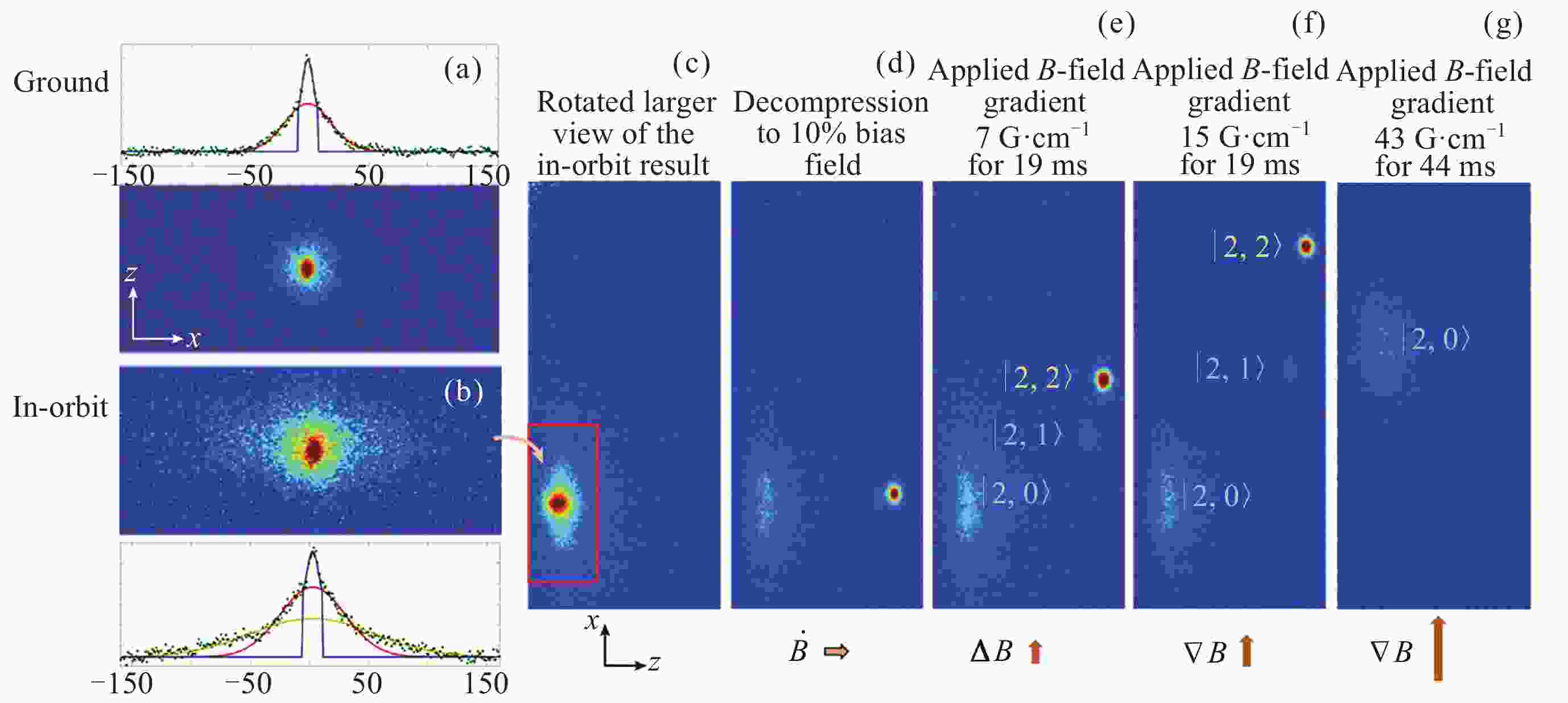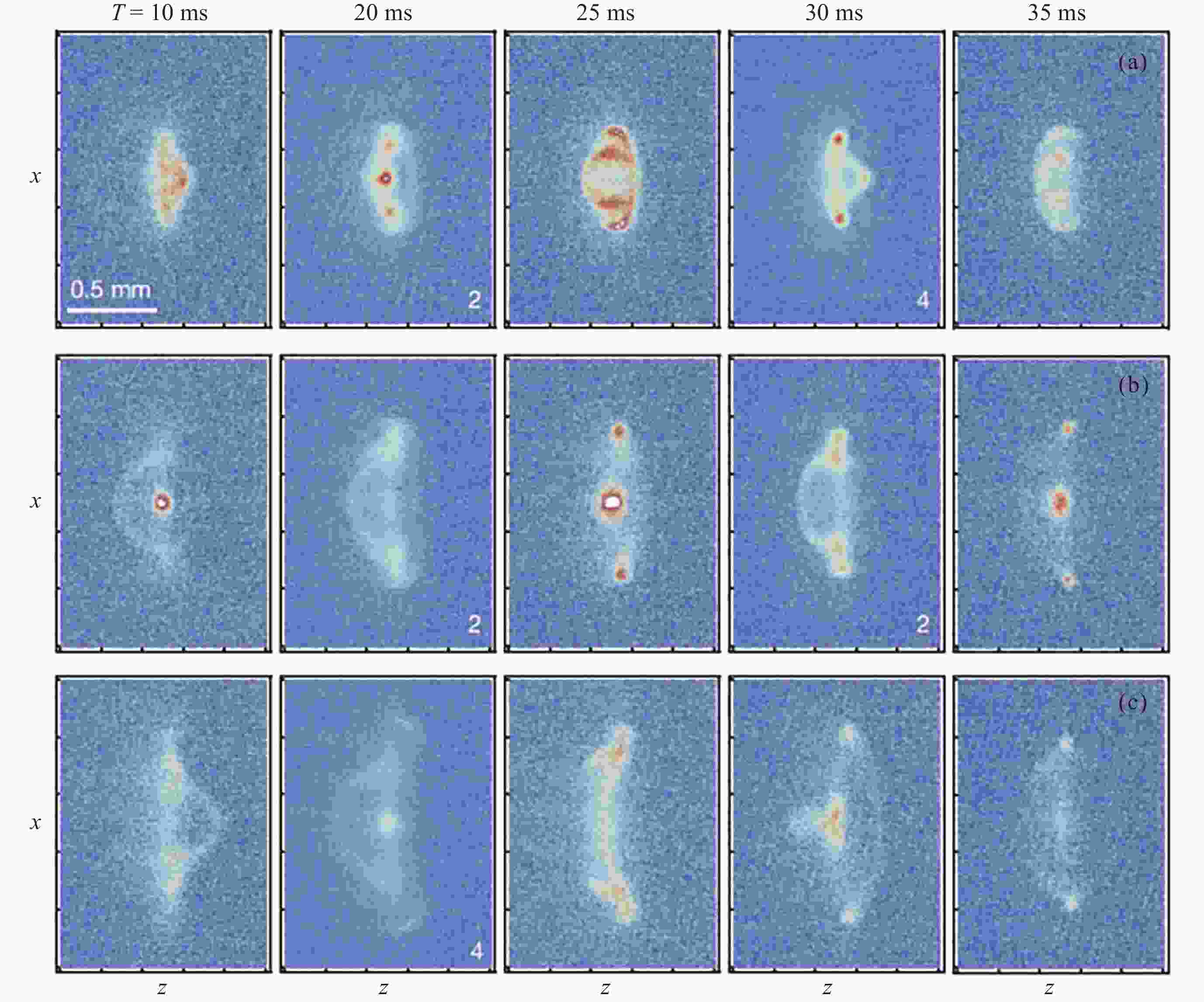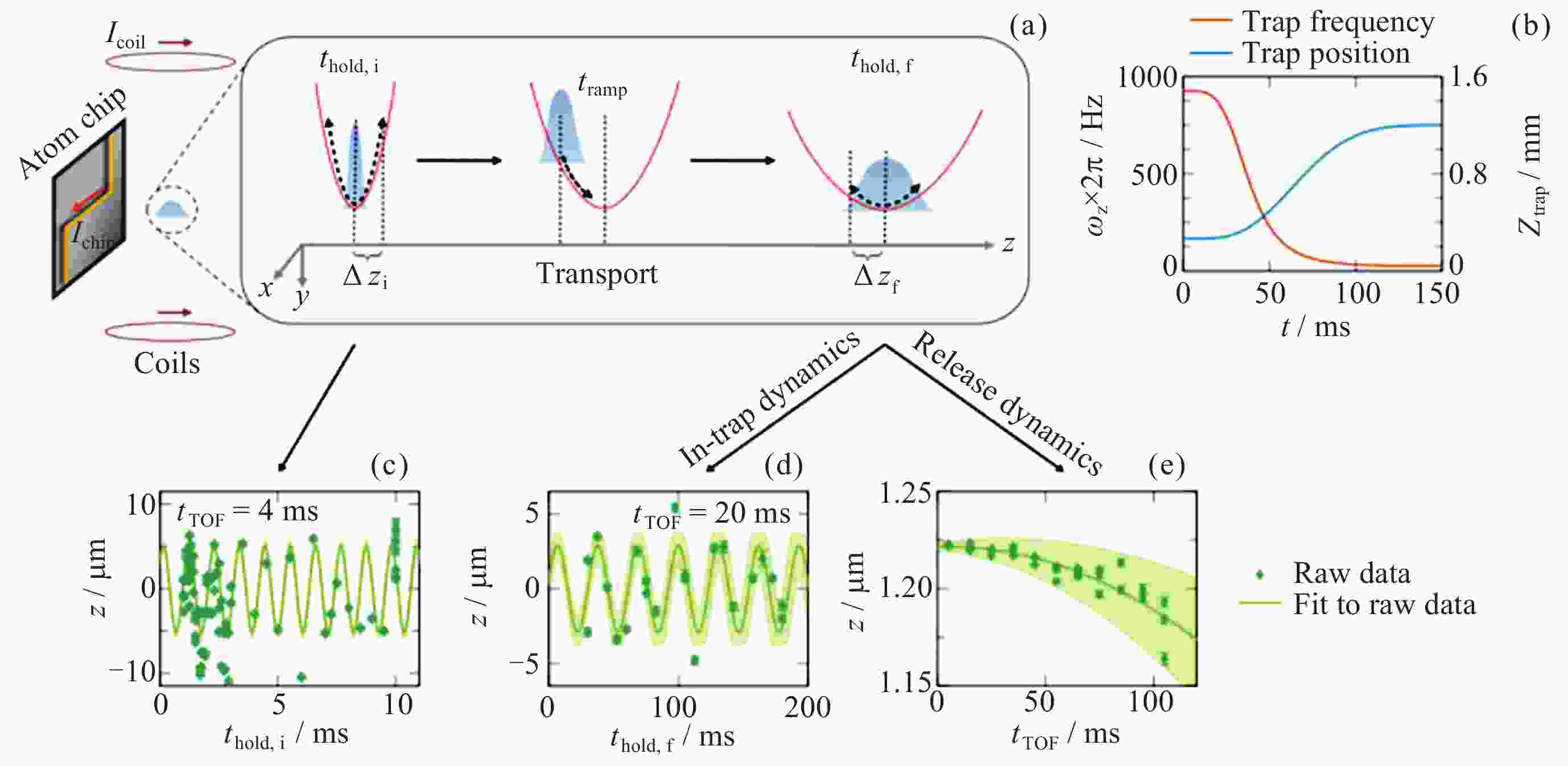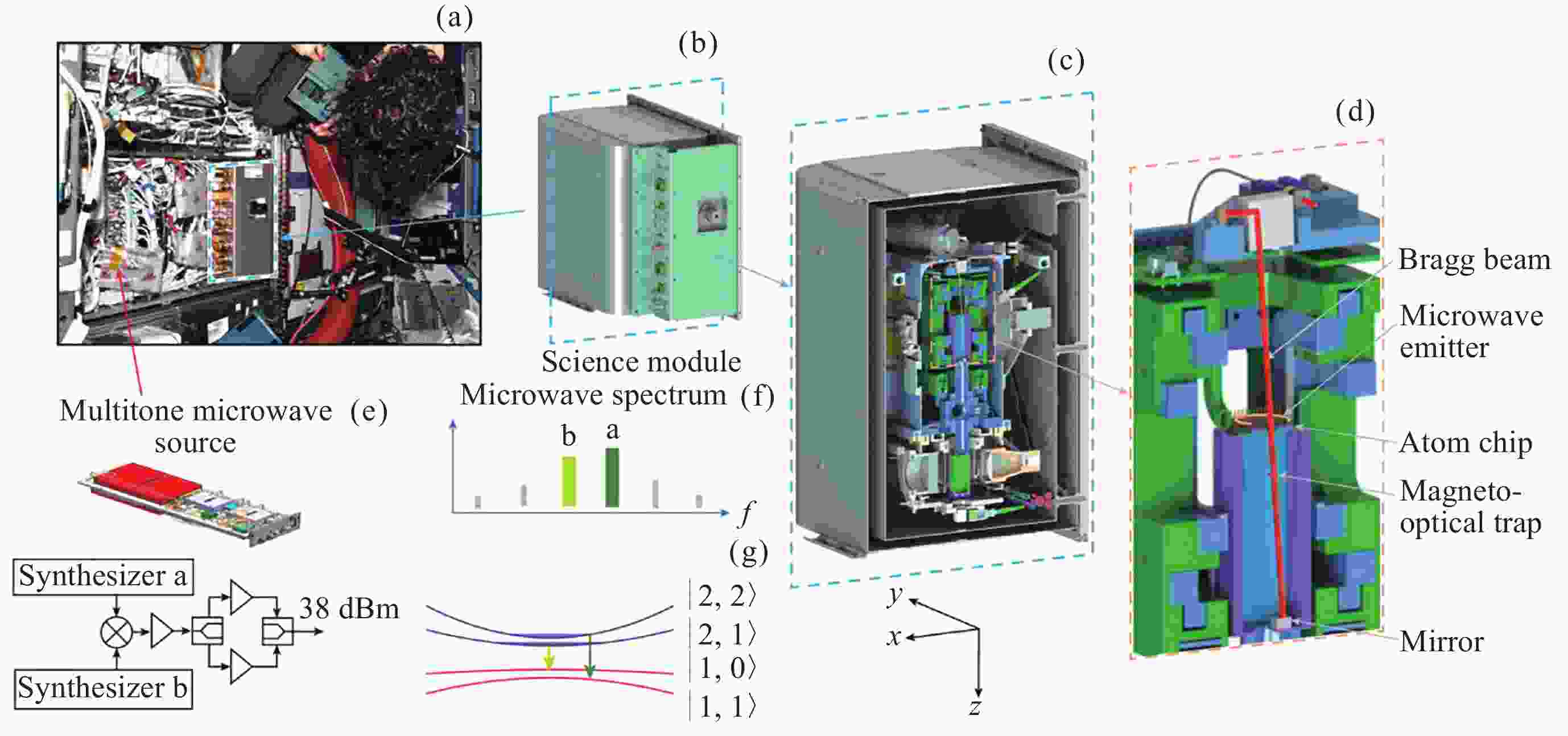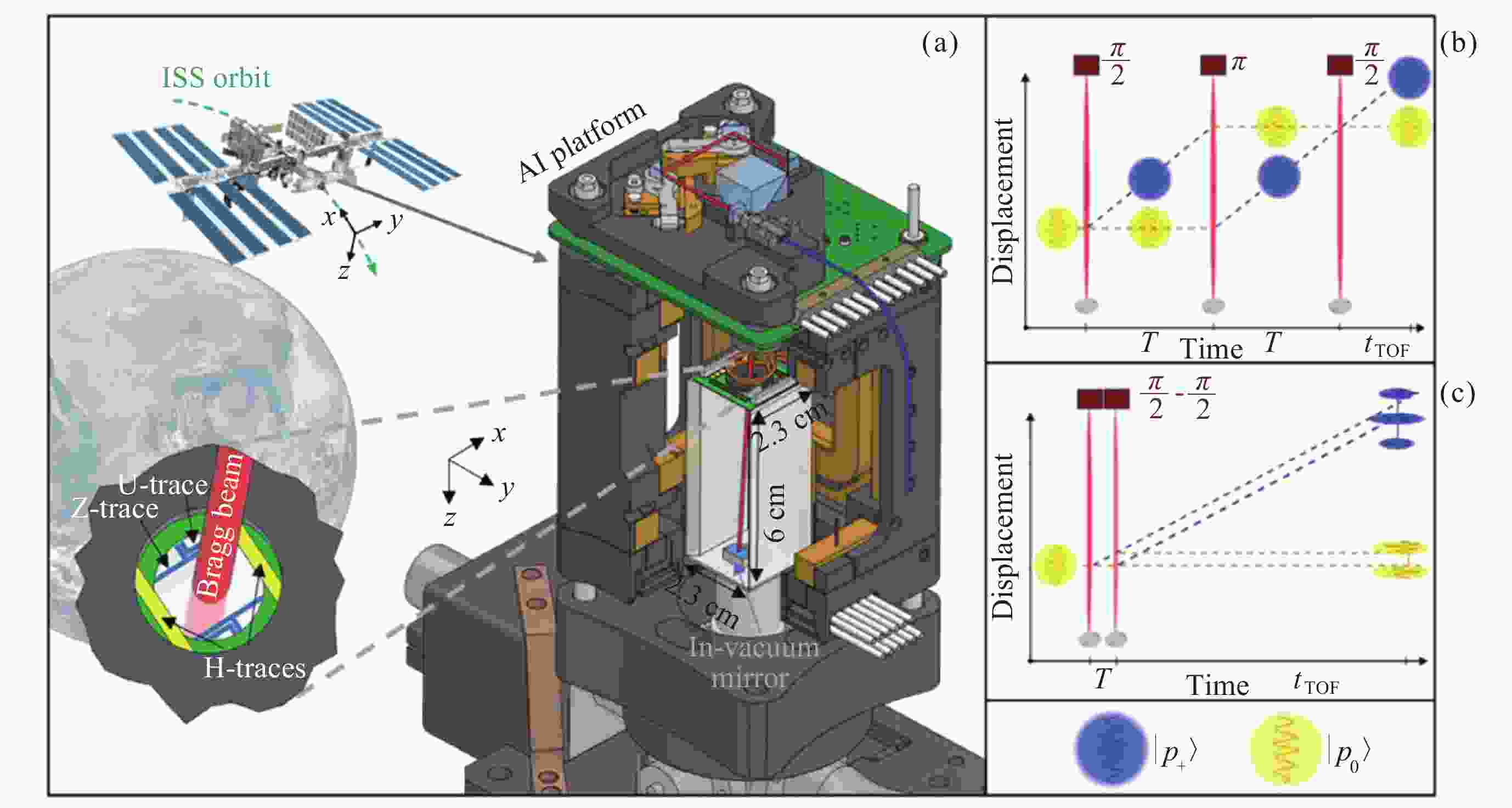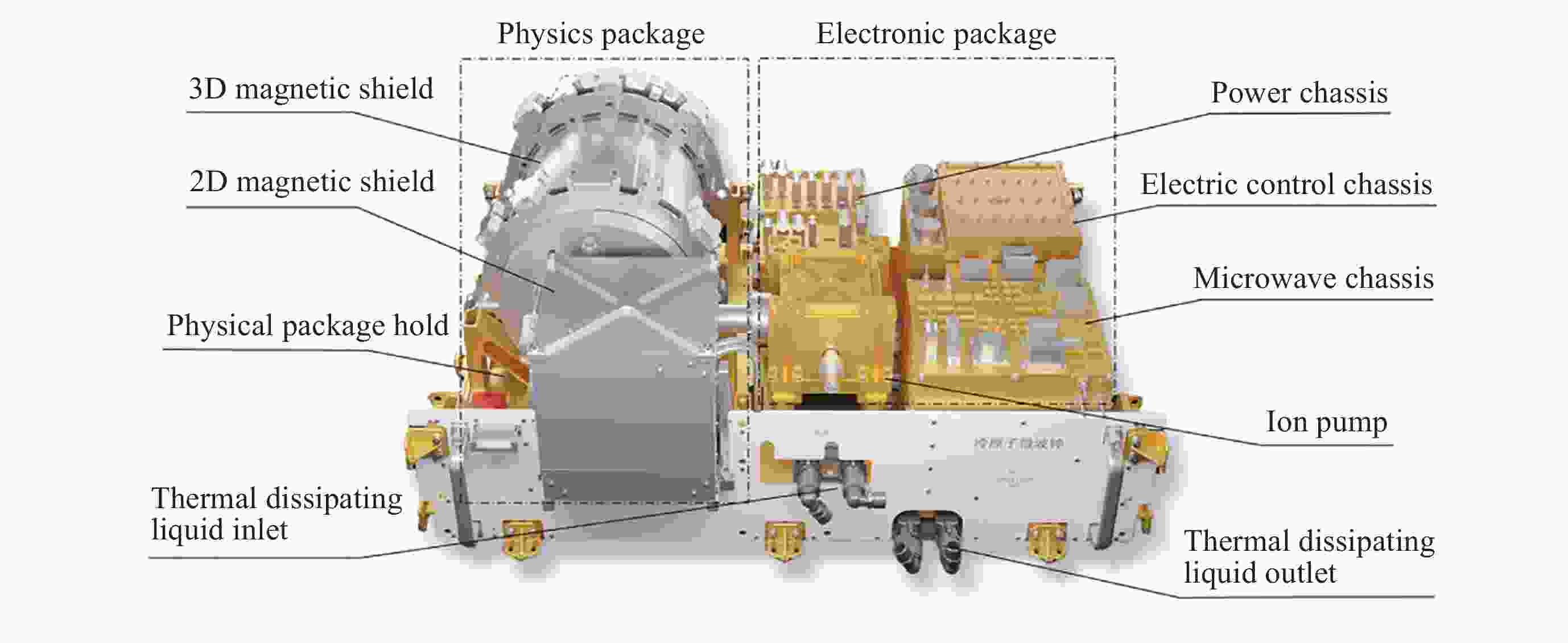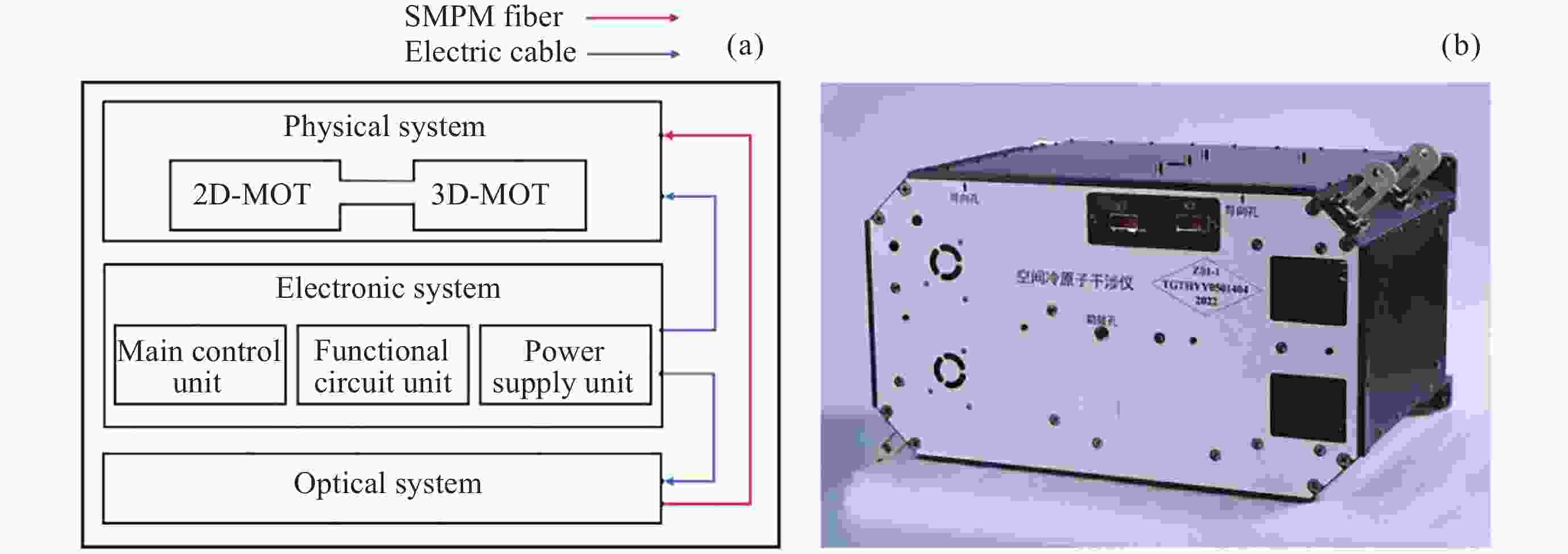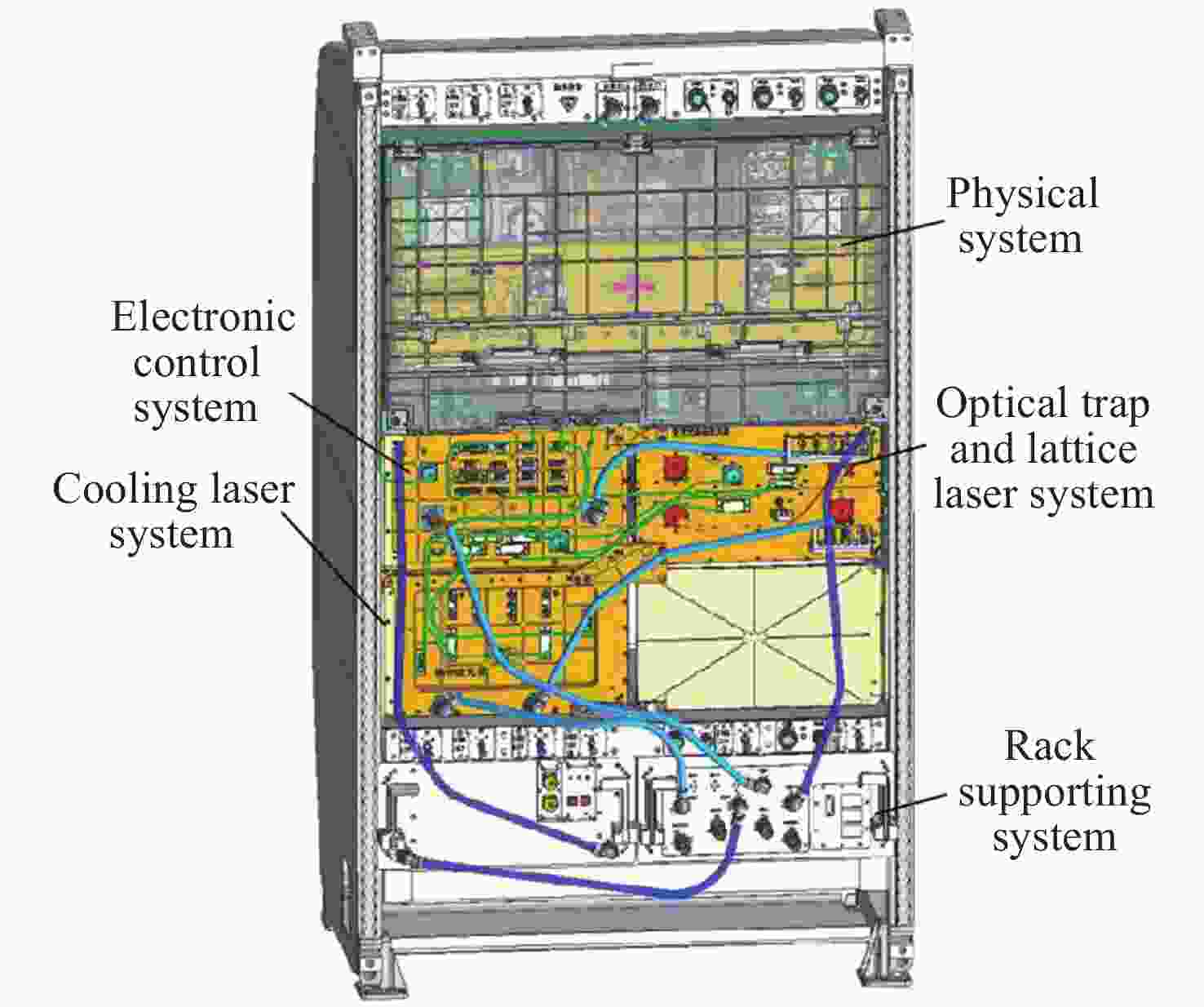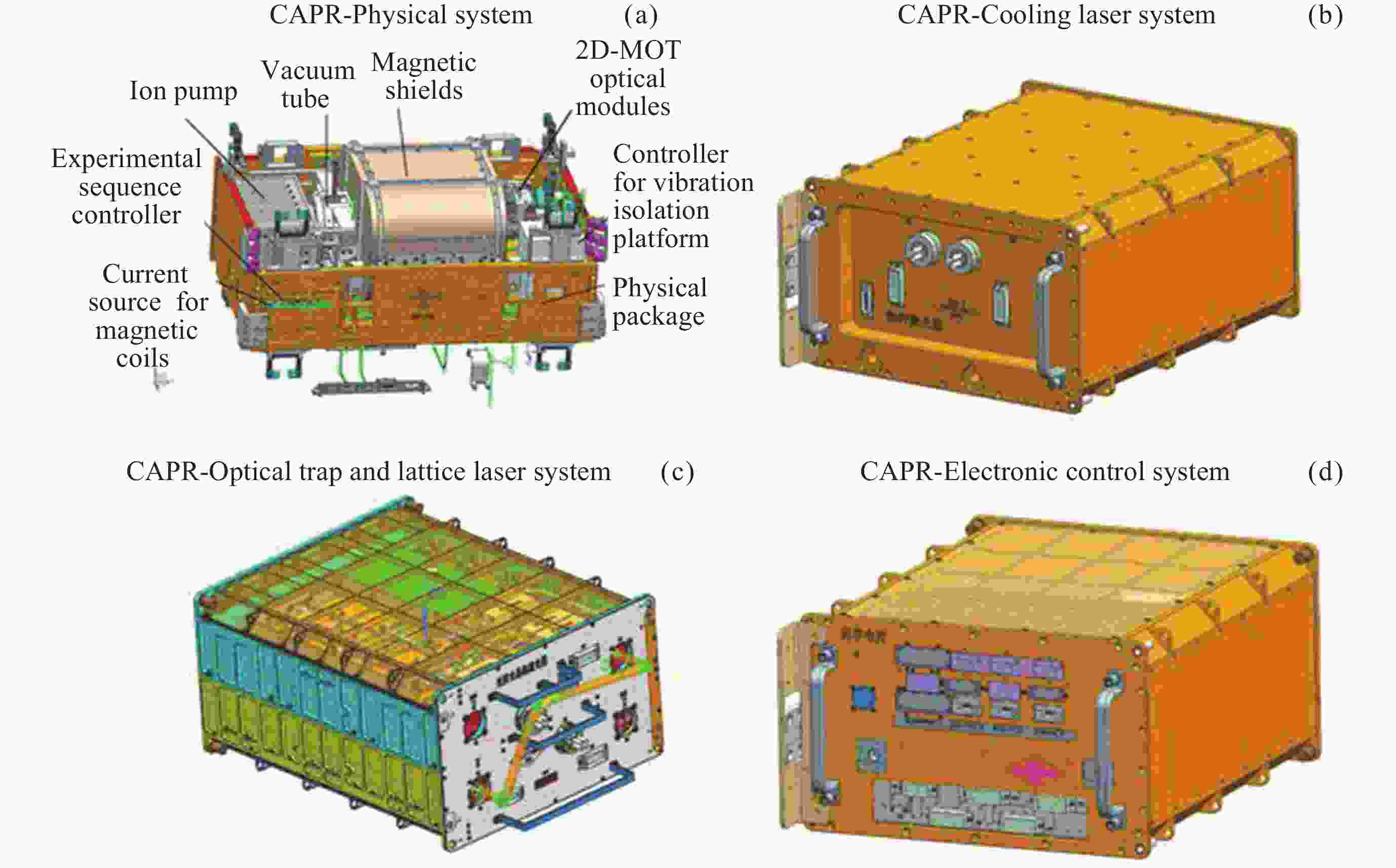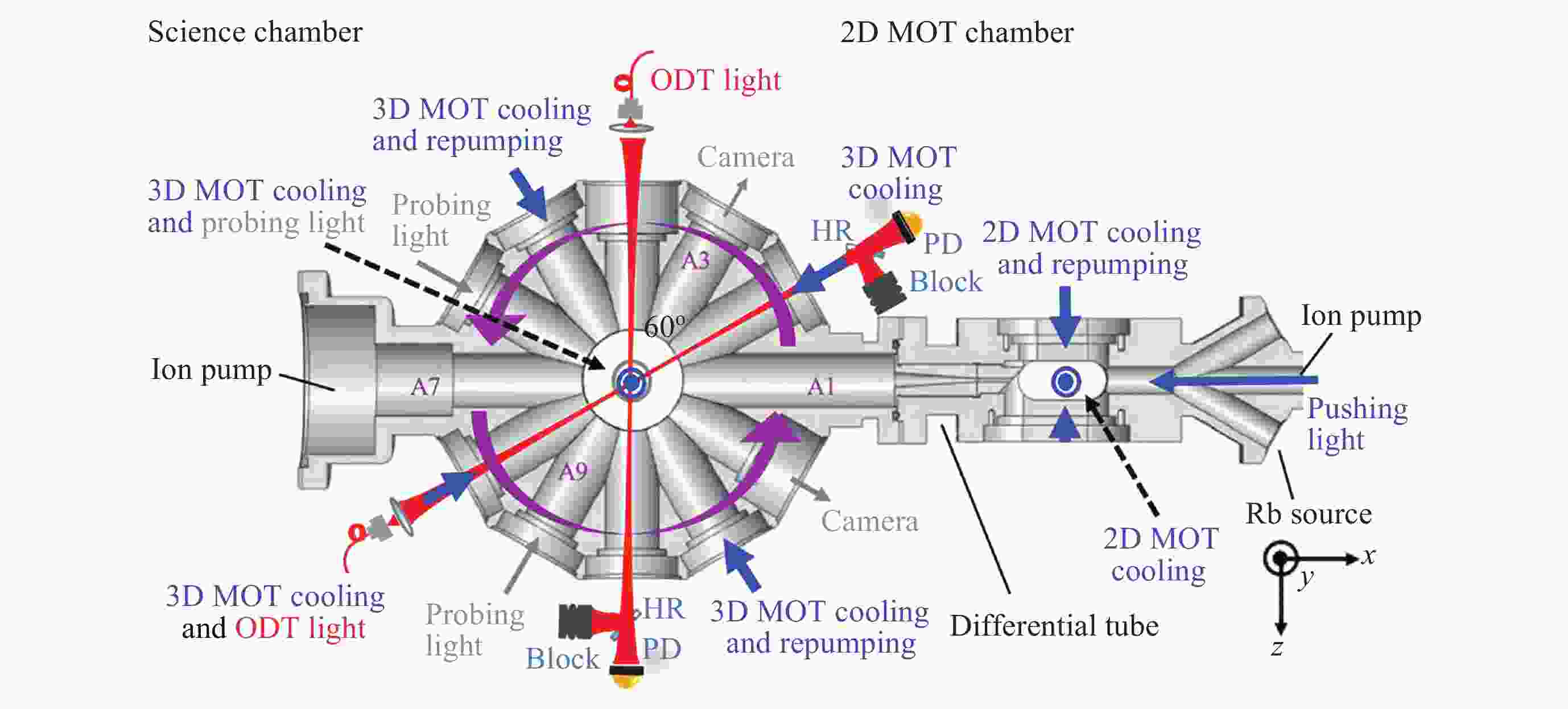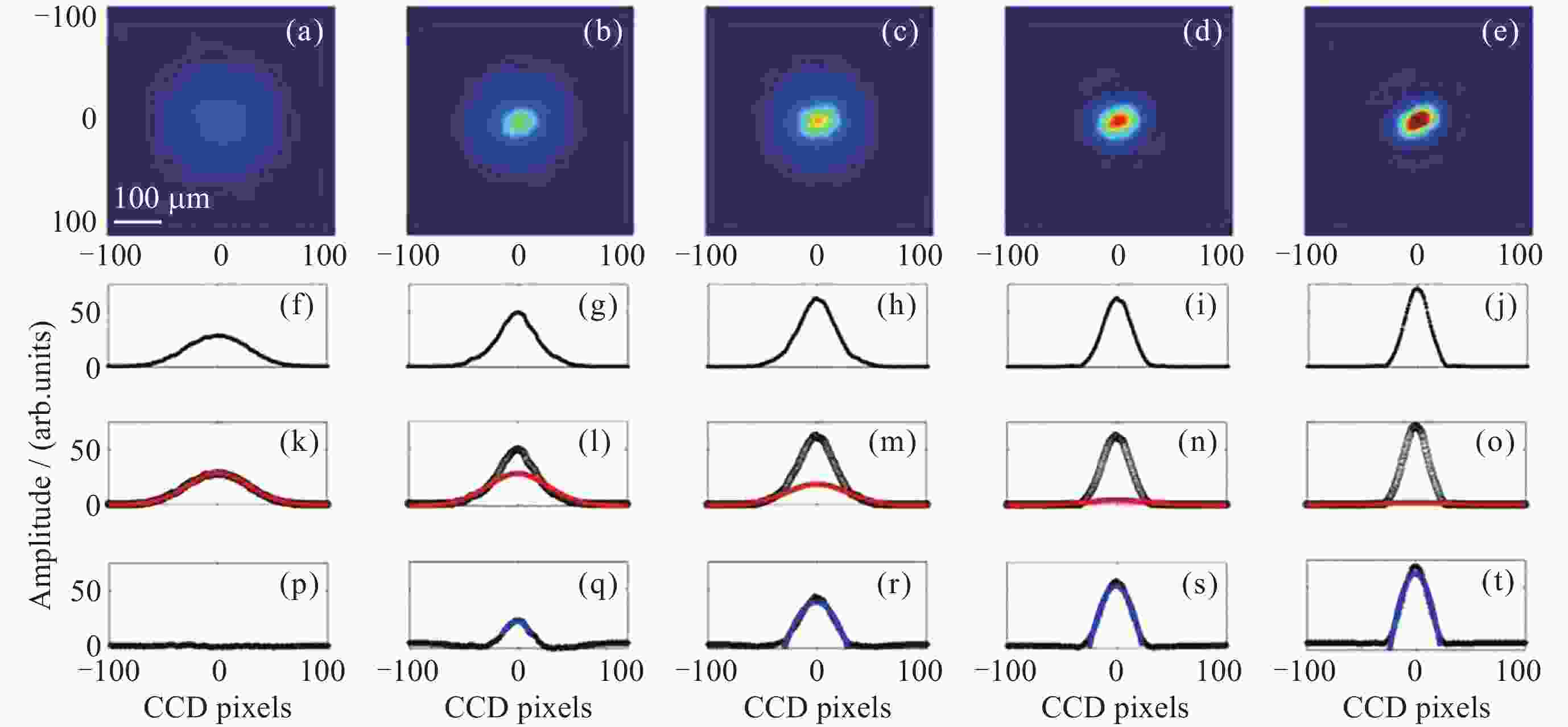Research on Ultracold Atom Physics in Microgravity
-
摘要: 中国空间站的发展和建成为微重力环境下超冷原子物理的研究及其应用提供了必要的实验条件. 2022年10月31日, 中国科学院上海光学精密机械研究所联合北京大学研制的中国空间站超冷原子物理实验柜 (简称超冷柜) 搭载梦天实验舱进入中国空间站. 超冷柜的主要目标是在中国空间站建成以87Rb 玻色–爱因斯坦凝聚(Bose-Einstein Condensate, BEC)为工作物质的超冷原子物理实验平台, 基于微重力环境优势利用两级交叉光束冷却 (Two-Stage Crossed Beams Cooling, TSCBC) 的实验方案获得皮–开尔文 (picoKelvin, pK) 量级的超冷原子, 在微重力环境下通过调控以及观察极低温超冷原子以发现新奇的物理现象. 本文介绍了BEC的实现和深度冷却实验方案, 以及微重力环境下超冷原子物理研究与应用领域所取得的一系列进展; 详细介绍了超冷柜的设计方案以及地面验证实验. 到目前为止, 超冷柜按照预期持续开展微重力环境下的超冷原子物理研究, 在轨连续运行时间超过2年, 取得了初步的实验结果, 实现了超冷柜作为微重力环境下超冷原子物理实验平台的主要目标.Abstract: The China Space Station (CSS) provides an ideal experimental platform for researching and applying ultracold atoms in microgravity. On 31 October 2022, the Cold Atom Physics Research Rack (CAPR) was launched to the CSS together with the Mengtian lab module, designed by the Shanghai Institute of Optics and Fine Mechanics of the Chinese Academy of Sciences (SIOM) and Peking University. The main goal of the CAPR is to build an ultracold atomic physics experiment platform using 87Rb Bose Einstein Condensate (BEC) in the CSS. In microgravity, ultracold atoms can be cooled to picokelvin (pK) via Two-Stage Crossed Beams Cooling (TSCBC), which is three orders of magnitude lower than on earth and can inspire the novel physical phenomena. The preparation of the BEC and the deep cooling are introduced in this paper, as well as a series of advancements in ultracold atoms in microgravity. The CAPR is an experimental platform that relies on evaporative cooling in a crossed optical dipole trap. Furthermore, the CAPR’s design scheme and ground verification experiment are also introduced. So far, the CAPR has continued to conduct research on ultracold atoms in microgravity, with more than two years of uninterrupted operation in orbit. Up to now, preliminary experimental results have been achieved, realizing the primary purpose of the CAPR.
-
Key words:
- Bose-Einstein condensate /
- Ultracold atom /
- China Space Station (CSS) /
- Microgravity
-
表 1 微重力环境实验平台
Table 1. Experiment platform for microgravity
实验平台 微重力时间 微重力环境下工作时段(特征) 微重力水平/g 落塔 (Germany) 4.7 ~9.4 s 每天3次 10–5 抛物线飞机 22 s 每次飞行提供90个周期 10–2 探空火箭 6 min 单次飞行 10–5 爱因斯坦电梯 0.4 s 每天300次 5×10–3 落塔 (China) 3.5 s 每天2~4次 10–5 自由落体设施 2.2 s 每天15次 10–3 电磁弹射微重力实验装置 4 s 不少于每天50次 10–6 天宫二号 连续 2016年9月15日至2019年7月16日 10–4 国际空间站 连续 2018年5月21日至今 10–6 中国空间站 连续 2022年10月31日至今 10–6 -
[1] BOSE. Plancks gesetz und lichtquantenhypothese[J]. Zeitschrift für Physik, 1924, 26(1): 178-181 [2] EINSTEIN A. Quantentheorie des einatomigen idealen Gases[J]. SB Preuss. Akad. Wiss. phys. -math. Klasse, 1924 [3] ANDERSON M H, ENSHER J R, MATTHEWS M R, et al. Observation of Bose-Einstein condensation in a dilute atomic vapor[J]. Science, 1995, 269(5221): 198-201 doi: 10.1126/science.269.5221.198 [4] AMMANN H, CHRISTENSEN N. Delta kick cooling: a new method for cooling atoms[J]. Physical Review Letters, 1997, 78(11): 2088-2091 doi: 10.1103/PhysRevLett.78.2088 [5] LEANHARDT A E, PASQUINI T A, SABA M, et al. Cooling Bose-Einstein condensates below 500 Picokelvin[J]. Science, 2003, 301(5639): 1513-1515 doi: 10.1126/science.1088827 [6] WANG L, ZHANG P, CHEN X Z, et al. Generating a Picokelvin ultracold atomic ensemble in microgravity[J]. Journal of Physics B: Atomic, Molecular and Optical Physics, 2013, 46(19): 195302 doi: 10.1088/0953-4075/46/19/195302 [7] KASEVICH M A, RIIS E, CHU S, et al. RF spectroscopy in an atomic fountain[J]. Physical Review Letters, 1989, 63(6): 612-615 doi: 10.1103/PhysRevLett.63.612 [8] LIU L, LÜ D S, CHEN W B, et al. In-orbit operation of an atomic clock based on laser-cooled 87Rb atoms[J]. Nature Communications, 2018, 9(1): 2760 doi: 10.1038/s41467-018-05219-z [9] LAURENT P, LEMONDE P, SIMON E, et al. A cold atom clock in absence of gravity[J]. The European Physical Journal D-Atomic, Molecular, Optical and Plasma Physics, 1998, 3(3): 201-204 [10] ALONSO I, ALPIGIANI C, ALTSCHUL B, et al. Cold atoms in space: community workshop summary and proposed road-map[J]. EPJ Quantum Technology, 2022, 9(1): 30 doi: 10.1140/epjqt/s40507-022-00147-w [11] HEAVNER T P, HOLLBERG L, JEFFERTS S R, et al. Characterization of a cold cesium source for PARCS: primary atomic reference clock in space[J]. IEEE Transactions on Instrumentation and Measurement, 2001, 50(2): 500-502 doi: 10.1109/19.918176 [12] 吕德胜, 刘亮, 王育竹. 空间冷原子钟及其科学应用[J]. 载人航天, 2011, 17(1): 47-51 doi: 10.3969/j.issn.1674-5825.2011.01.011LÜ Desheng, LIU Liang, WANG Yuzhu. Space cold atomic clock and its scientific applications[J]. Manned Spaceflight, 2011, 17(1): 47-51 doi: 10.3969/j.issn.1674-5825.2011.01.011 [13] MENG Y L, JIANG X J, WU J, et al. Satellite-borne atomic clock based on diffuse laser-cooled atoms[J]. Frontiers in Physics, 2022, 10: 985586 doi: 10.3389/fphy.2022.985586 [14] KOVACHY T, HOGAN J M, SUGARBAKER A, et al. Matter wave lensing to picokelvin temperatures[J]. Physical Review Letters, 2015, 114(14): 143004 doi: 10.1103/PhysRevLett.114.143004 [15] BASSI A, CACCIAPUOTI L, CAPOZZIELLO S, et al. A way forward for fundamental physics in space[J]. NPJ Microgravity, 2022, 8(1): 49 doi: 10.1038/s41526-022-00229-0 [16] TINO G M, BASSI A, BIANCO G, et al. SAGE: a proposal for a space atomic gravity explorer[J]. The European Physical Journal D, 2019, 73(11): 228 doi: 10.1140/epjd/e2019-100324-6 [17] SUN Y, LIU L. Designing precision measurement of the gravitational Aharonov-Bohm effect in microgravity[OL]. Fundamental Research, 2024. https://doi.org/10.1016/j.fmre.2024.05.006 [18] LIU L. Exploring the Universe with matter waves[J]. Nature, 2018, 562(7727): 351-352 doi: 10.1038/d41586-018-07009-5 [19] VOGEL A, SCHMIDT M, SENGSTOCK K, et al. Bose–Einstein condensates in microgravity[J]. Applied Physics B, 2006, 84(4): 663-671 doi: 10.1007/s00340-006-2359-y [20] SLEATOR T, BERMAN P R, DUBETSKY B. High precision atom interferometry in a microgravity environment[OL]. arXiv preprint arXiv: 9905047, 1999 [21] PETERS A, CHUNG K Y, CHU S. Measurement of gravitational acceleration by dropping atoms[J]. Nature, 1999, 400(6747): 849-852 doi: 10.1038/23655 [22] PETERS A, CHUNG K Y, YOUNG B, et al. Precision atom interferometry[J]. Philosophical Transactions of the Royal Society of London. Series A: Mathematical, Physical and Engineering Sciences, 1997, 355(1733): 2223-2233 doi: 10.1098/rsta.1997.0121 [23] CHEN X Z, FAN B. The emergence of picokelvin physics[J]. Reports on Progress in Physics, 2020, 83(7): 076401 doi: 10.1088/1361-6633/ab8ab6 [24] ADAMS C S, LEE H J, DAVIDSON N, et al. Evaporative cooling in a crossed dipole trap[J]. Physical Review Letters, 1955, 74(18): 3577-3580 [25] BARRETT M D, SAUER J A, CHAPMAN M S. All-optical formation of an atomic Bose-Einstein condensate[J]. Physical Review Letters, 2001, 87(1): 010404 doi: 10.1103/PhysRevLett.87.010404 [26] HÄNSEL W, HOMMELHOFF P, HÄNSCH T W, et al. Bose–Einstein condensation on a microelectronic chip[J]. Nature, 2001, 413(6855): 498-501 doi: 10.1038/35097032 [27] FOLMAN R, KRÜGER P, SCHMIEDMAYER J, et al. Microscopic atom optics: from wires to an atom chip[J]. Advances in Atomic, Molecular, and Optical Physics, 2002, 48: 263-356 [28] FORTÁGH J, ZIMMERMANN C. Magnetic microtraps for ultracold atoms[J]. Reviews of Modern Physics, 2007, 79(1): 235-289 doi: 10.1103/RevModPhys.79.235 [29] 周蜀渝, 龙全, 周善钰, 等. 玻色–爱因斯坦凝聚在中国科学院上海光机所实现[J]. 物理, 2002, 31(8): 481-482 doi: 10.3321/j.issn:0379-4148.2002.08.001ZHOU Shuyu, LONG Quan, ZHOU Shanyu, et al. Realization of Bose-Einstein condensation in SIOM of Chinese Academy of Sciences[J]. Physics, 2002, 31(8): 481-482 doi: 10.3321/j.issn:0379-4148.2002.08.001 [30] 李晓林, 柯敏, 颜波, 等. 利用原子芯片上Z形磁阱囚禁中性87Rb原子[J]. 物理学报, 2007, 56(11): 6367-6372 doi: 10.3321/j.issn:1000-3290.2007.11.034LI Xiaolin, KE Min, YAN Bo, et al. A Z-trap in an atom chip for trapping neutral 87Rb atoms[J]. Acta Physica Sinica, 2007, 56(11): 6367-6372 doi: 10.3321/j.issn:1000-3290.2007.11.034 [31] HU J Z, URVOY A, VENDEIRO Z, et al. Creation of a Bose-condensed gas of 87Rb by laser cooling[J]. Science, 2017, 358(6366): 1078-1080 doi: 10.1126/science.aan5614 [32] ZHANG C, YANG C, HU L, et al. Beijing drop tower microgravity adjustment towards 10–3~10−5 g level by Cold-Gas Thrusters[J]. Microgravity Science and Technology, 2023, 35(4): 39 doi: 10.1007/s12217-023-10060-1 [33] ZHANG XQ, YUAN LG, WU WD, et al. Some key technics of drop tower experiment device of National Microgravity Laboratory (China)(NMLC)[J]. Science in China Ser. E Engineering & Materials Science, 2005, 48: 305-316. [34] 胡文瑞, 康琦. 微重力科学前沿[J]. 科技导报, 2020, 38(10): 59-62HU Wenrui, KANG Qi. Frontiers of microgravity science[J]. Science & Technology Review, 2020, 38(10): 59-62 [35] LUO L, ZHOU HY, SUN YH, et al. Tsinghua university freefall facility (tuff): A 2.2 second drop tunnel for microgravity research[J]. Microgravity Science and Technology, 33, 1-19. [36] ZHANG J Q, DONG W B, WANG Z, et al. Development of a new microgravity experiment facility with electromagnetic launch[J]. Microgravity Science and Technology, 2021, 33(6): 68 doi: 10.1007/s12217-021-09915-2 [37] VAN ZOEST T, GAALOUL N, SINGH Y, et al. Bose-Einstein condensation in microgravity[J]. Science, 2010, 328(5985): 1540-1543 doi: 10.1126/science.1189164 [38] MÜNTINGA H, AHLERS H, KRUTZIK M, et al. Interferometry with Bose-Einstein condensates in microgravity[J]. Physical Review Letters, 2013, 110(9): 093602 doi: 10.1103/PhysRevLett.110.093602 [39] VOGT C, WOLTMANN M, HERRMANN S, et al. Evaporative cooling from an optical dipole trap in microgravity[J]. Physical Review A, 2020, 101(1): 013634 doi: 10.1103/PhysRevA.101.013634 [40] LANGLOIS M, DE SARLO L, HOLLEVILLE D, et al. Compact cold-atom clock for onboard Timebase: tests in reduced gravity[J]. Physical Review Applied, 2018, 10(6): 064007 doi: 10.1103/PhysRevApplied.10.064007 [41] PETERMAN P, GIBBLE K, LAURENT P, et al. Microwave lensing frequency shift of the PHARAO laser-cooled microgravity atomic clock[J]. Metrologia, 2016, 53(2): 899 doi: 10.1088/0026-1394/53/2/899 [42] SACCOCCIO M, LOESEL J, COATANTIEC C, et al. PHARAO space atomic clock: new developments on the laser source[C]//Proceedings of the SPIE 10568, International Conference on Space Optics—ICSO 2004. Toulouse, France: SPIE, 2017: 1056819 [43] LAURENT P, ESNAUT F X, GIBBLE K, et al. Qualification and frequency accuracy of the space-based primary frequency standard PHARAO[J]. Metrologia, 2020, 57(5): 055005 doi: 10.1088/1681-7575/ab948b [44] LAURENT P, CLAIRON A, LEMONDE P, et al. The space clock PHARAO: functioning and expected performances[C]//IEEE International Frequency Control Symposium and PDA Exhibition Jointly with the 17th European Frequency and Time Forum, 2003. Proceedings of the 2003. Tampa, FL, USA: IEEE, 2003: 179-184 [45] NYMAN R A, VAROQUAUX G, LIENHART F, et al. I. C. E. : a transportable atomic inertial sensor for test in microgravity[J]. Applied Physics B, 2006, 84(4): 673-681 doi: 10.1007/s00340-006-2395-7 [46] STERN G, BATTELIER B, GEIGER R, et al. Light-pulse atom interferometry in microgravity[J]. The European Physical Journal D, 2009, 53(3): 353-357 doi: 10.1140/epjd/e2009-00150-5 [47] GEIGER R, MÉNORET V, STERN G, et al. Detecting inertial effects with airborne matter-wave interferometry[J]. Nature Communications, 2011, 2(1): 474 doi: 10.1038/ncomms1479 [48] BATTELIER B, BARRETT B, FOUCHÉ L, et al. Development of compact cold-atom sensors for inertial navigation[J]. Quantum Optics, 2016, 9900: 990004 [49] BARRETT B, ANTONI-MICOLLIER L, CHICHET L, et al. Dual matter-wave inertial sensors in weightlessness[J]. Nature Communications, 2016, 7(1): 13786 doi: 10.1038/ncomms13786 [50] ANTONI-MICOLLIER L, BARRETT B, CHICHET L, et al. Generation of high-purity low-temperature samples of 39K for applications in metrology[J]. Physical Review A, 2017, 96(2): 023608 doi: 10.1103/PhysRevA.96.023608 [51] CONDON G, RABAULT M, BARRETT B, et al. All-optical Bose-Einstein condensates in microgravity[J]. Physical Review Letters, 2019, 123(24): 240402 doi: 10.1103/PhysRevLett.123.240402 [52] PELLUET C, ARGUEL R, RABAULT M, et al. Atom interferometry in an Einstein elevator[OL]. arXiv preprint arXiv: 2407.07183, 2024 [53] LÜ D S, REN W, SUN Y, et al. Characterization of laser cooling in microgravity via long-term operations in TianGong-2 space lab[J]. National Science Review, 2023, 10(4): nwac180 doi: 10.1093/nsr/nwac180 [54] REN W, LI T, QU Q Z, et al. Development of a space cold atom clock[J]. National Science Review, 2020, 7(12): 1828-1836 doi: 10.1093/nsr/nwaa215 [55] BECKER D, LACHMANN M D, SEIDEL S T, et al. Space-borne Bose–Einstein condensation for precision interferometry[J]. Nature, 2018, 562(7727): 391-395 doi: 10.1038/s41586-018-0605-1 [56] LACHMANN M D, AHLERS H, BECKER D, et al. Ultracold atom interferometry in space[J]. Nature Communications, 2021, 12(1): 1317 doi: 10.1038/s41467-021-21628-z [57] KRUTZIK M. Matter Wave Interferometry in Microgravity[D]. Humboldt-Universität zu Berlin: Mathematisch-Naturwissenschaftliche Fakultät I, 2014 [58] SORIANO M, AVELINE D, MCKEE M, et al. Cold atom laboratory mission system design[C]//2014 IEEE Aerospace Conference. Big Sky, MT, USA: IEEE, 2014 [59] ELLIOTT E R, KRUTZIK M C, WILLIAMS J R, et al. NASA’s Cold Atom Lab (CAL): system development and ground test status[J]. NPJ Microgravity, 2018, 4(1): 16 doi: 10.1038/s41526-018-0049-9 [60] AVELINE D C, WILLIAMS J R, ELLIOTT E R, et al. Observation of Bose–Einstein condensates in an Earth-orbiting research lab[J]. Nature, 2020, 582(7811): 193-197 doi: 10.1038/s41586-020-2346-1 [61] FRYE K, ABEND S, BARTOSCH W, et al. The Bose-Einstein condensate and cold atom laboratory[J]. EPJ Quantum Technology, 2021, 8(1): 1 doi: 10.1140/epjqt/s40507-020-00090-8 [62] CAROLLO R A, AVELINE D C, RHYNO B, et al. Observation of ultracold atomic bubbles in orbital microgravity[J]. Nature, 2022, 606(7913): 281-286 doi: 10.1038/s41586-022-04639-8 [63] GAALOUL N, MEISTER M, CORGIER R, et al. A space-based quantum gas laboratory at picokelvin energy scales[J]. Nature Communications, 2022, 13(1): 7889 doi: 10.1038/s41467-022-35274-6 [64] ELLIOTT E R, AVELINE D C, BIGELOW N P, et al. Quantum gas mixtures and dual-species atom interferometry in space[J]. Nature, 2023, 623(7987): 502-508 doi: 10.1038/s41586-023-06645-w [65] WILLIAMS J R, SACKETT C A, AHLERS H, et al. Interferometry of atomic matter waves in the cold atom lab onboard the International Space Station[OL]. arXiv preprint arXiv: 2402.14685, 2024 [66] LÜ D S, PENG X K, REN W, et al. Design of a space atomic clock with intracavity cooling[C]//2017 Joint Conference of the European Frequency and Time Forum and IEEE International Frequency Control Symposium (EFTF/IFC). Besancon, France: IEEE, 2017: 623-624 [67] ZHANG Z, XIANG J F, MENG Y M, et al. Design of a highly reliable and low-cost optical bench for laser cooling[J]. Optical Fiber Technology, 2022, 72: 102974 doi: 10.1016/j.yofte.2022.102974 [68] ZHANG Z, XIANG J F, XU B, et al. Integrated, reliable laser system for an 87Rb cold atom fountain clock[J]. Chinese Physics B, 2023, 32(1): 013202 doi: 10.1088/1674-1056/ac9e95 [69] DENG S M D, REN W, XIANG J F, et al. Cold atom microwave clock based on intracavity cooling in China Space Station[J]. NPJ Microgravity, 2024, 10(1): 66 doi: 10.1038/s41526-024-00407-2 [70] DENG S M D, REN W, XIANG J F, et al. Physics package based on intracavity laser cooling 87Rb atoms for space cold atom microwave clock[J]. Chinese Physics B, 2024, 33(7): 070602 doi: 10.1088/1674-1056/ad4bc1 [71] LI J T, CHEN X, ZHANG D F, et al. Realization of cold atom gyroscope in space[OL]. arXiv preprint arXiv: 2407.07183, 2024 [72] HE M, CHEN X, FANG J, et al. The space cold atom interferometer for testing the equivalence principle in the China Space Station[J]. NPJ Microgravity, 2023, 9(1): 58 doi: 10.1038/s41526-023-00306-y [73] 王翔, 王为. 天宫空间站关键技术特点综述[J]. 中国科学: 技术科学, 2021, 51(11): 1287-1298 doi: 10.1360/SST-2021-0304WANG Xiang, WANG Wei. Key technical characteristics of the Tiangong Space Station[J]. Scientia Sinica: Technologica, 2021, 51(11): 1287-1298 doi: 10.1360/SST-2021-0304 [74] GU Y D. The China Space Station: a new opportunity for space science[J]. National Science Review, 2022, 9(1): nwab219 doi: 10.1093/nsr/nwab219 [75] GAO M, ZHAO G H, GU Y D. Recent progress in space science and applications of China’s Space Station in 2020–2022[J]. Chinese Journal of Space Science, 2022, 42(4): 503-510 doi: 10.11728/cjss2022.04.yg29 [76] GU Y D, GAO M, ZHAO G H. Science research and utilization planning of China’s Space Station in operation period 2022-2032[J]. Chinese Journal of Space Science, 2020, 40(5): 609-614 doi: 10.11728/cjss2020.05.609 [77] LUAN T, JIA T, CHEN X Z, et al. Optimized degenerate Bose—fermi mixture in microgravity: DSMC simulation of sympathetic cooling[J]. Chinese Physics Letters, 2014, 31(4): 043401 doi: 10.1088/0256-307X/31/4/043401 [78] LUAN T, YAO H P, WANG L, et al. Two-stage crossed beam cooling with 6Li and 133Cs atoms in microgravity[J]. Optics Express, 2015, 23(9): 11378-11387 doi: 10.1364/OE.23.011378 [79] YAO H P, LUAN T, LI C, et al. Comparison of different techniques in optical trap for generating picokelvin 3D atom cloud in microgravity[J]. Optics Communications, 2016, 359: 123-128 doi: 10.1016/j.optcom.2015.09.065 [80] LUAN T, LI Y F, ZHANG X S, et al. Realization of two-stage crossed beam cooling and the comparison with Delta-kick cooling in experiment[J]. Review of Scientific Instruments, 2018, 89(12): 123110 doi: 10.1063/1.5046815 [81] FAN B, ZHAO L H, ZHANG Y, et al. Numerical study of evaporative cooling in the Space Station[J]. Journal of Physics B: Atomic, Molecular and Optical Physics, 2021, 54(1): 015302 doi: 10.1088/1361-6455/abc72d [82] 李琳, 熊炜, 汪斌, 等. 中国空间站超冷原子物理实验柜设计与验证[J]. 中国激光, 2024, 51(11): 1101014LI Lin, XIONG Wei, WANG Bin, et al. Design and verification of the cold atom physics rack installed in the Chinese Space Station[J]. Chinese Journal of Lasers, 2024, 51(11): 1101014 [83] LIU Q, XIE Y, LI L, et al. Development of an ultra-high vacuum system for a cold atom physics rack in space[J]. Vacuum, 2021, 190: 110192 doi: 10.1016/j.vacuum.2021.110192 [84] LI L, XIONG W, WANG B, et al. The design, realization, and validation of the scheme for quantum degenerate research in microgravity[J]. IEEE Photonics Journal, 2023, 15(3): 7100508 [85] 李文文, 刘乾, 梁昂昂, 等. 空间超冷原子实验两维磁光阱系统的集成设计与实现[J]. 中国激光, 2022, 49(11): 1112001 doi: 10.3788/CJL202249.1112001LI Wenwen, LIU Qian, LIANG Angang, et al. Integrated design and realization of two-dimensional magneto-optical trap for ultra-cold atomic physics rack in space[J]. Chinese Journal of Lasers, 2022, 49(11): 1112001 doi: 10.3788/CJL202249.1112001 [86] 洪毅, 侯霞, 陈迪俊, 等. 基于Rb87调制转移光谱稳频技术研究[J]. 中国激光, 2021, 48(21): 2101003 doi: 10.3788/CJL202148.2101003HONG Yi, HOU Xia, CHEN Dijun, et al. Research on frequency stabilization technology of modulation transfer spectroscopy based on Rb87[J]. Chinese Journal of Lasers, 2021, 48(21): 2101003 doi: 10.3788/CJL202148.2101003 [87] LI L, ZHOU C Y, XIONG W, et al. All-fiber laser system for all-optical 87Rb Bose Einstein condensate to space application[J]. Applied Optics, 2023, 62(29): 7844-7851 doi: 10.1364/AO.497749 [88] XIE Y, FAN B, LI H, et al. Ground experiment verification and on-orbit prediction of the two-stage cooling at pK level in the Chinese Space Station[J]. Journal of Physics B: Atomic, Molecular and Optical Physics, 2022, 55(20): 205301 doi: 10.1088/1361-6455/ac8e3d [89] LI H, YU J C, YUAN X L, et al. Deep cooling scheme of quantum degenerate gas and ground experimental verification for Chinese Space Station[J]. Frontiers in Physics, 2022, 10: 971059 doi: 10.3389/fphy.2022.971059 -
-





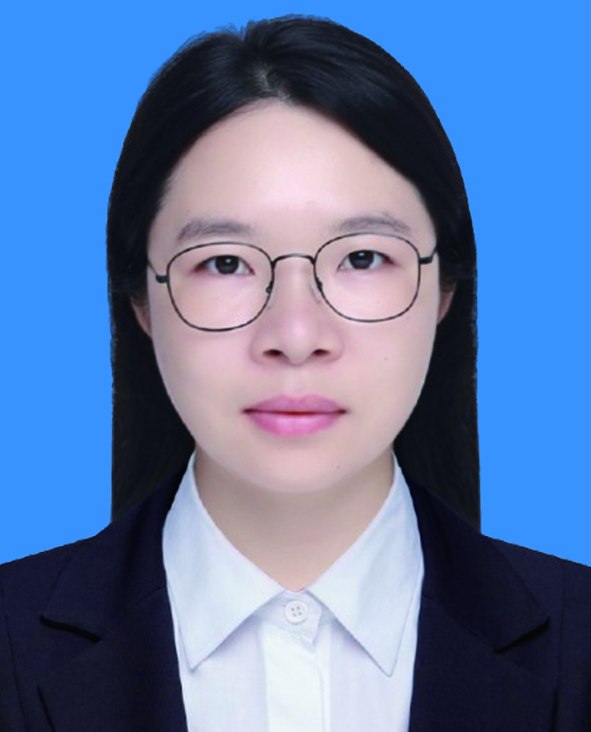 李琳 女, 1995年11月出生于山西省朔州市, 现为中国科学院上海光学精密机械研究所助理研究员, 主要研究方向为空间冷原子物理、冷原子传感等. E-mail:
李琳 女, 1995年11月出生于山西省朔州市, 现为中国科学院上海光学精密机械研究所助理研究员, 主要研究方向为空间冷原子物理、冷原子传感等. E-mail: 
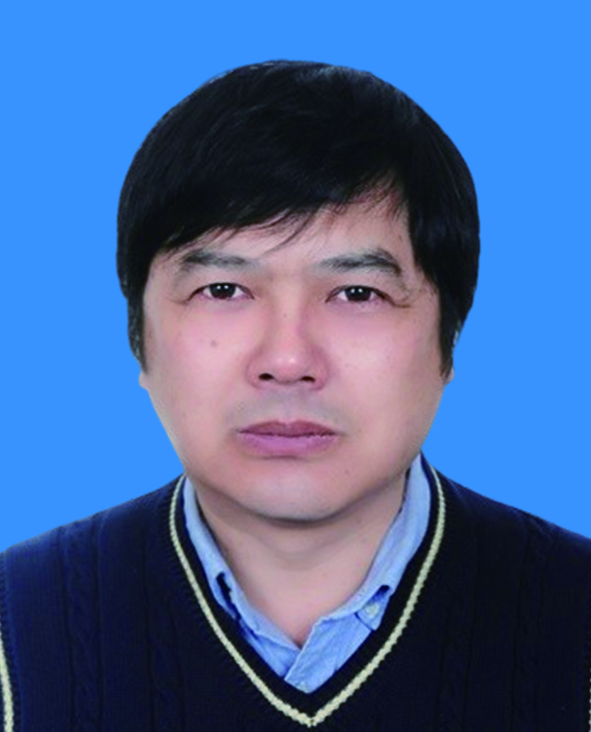
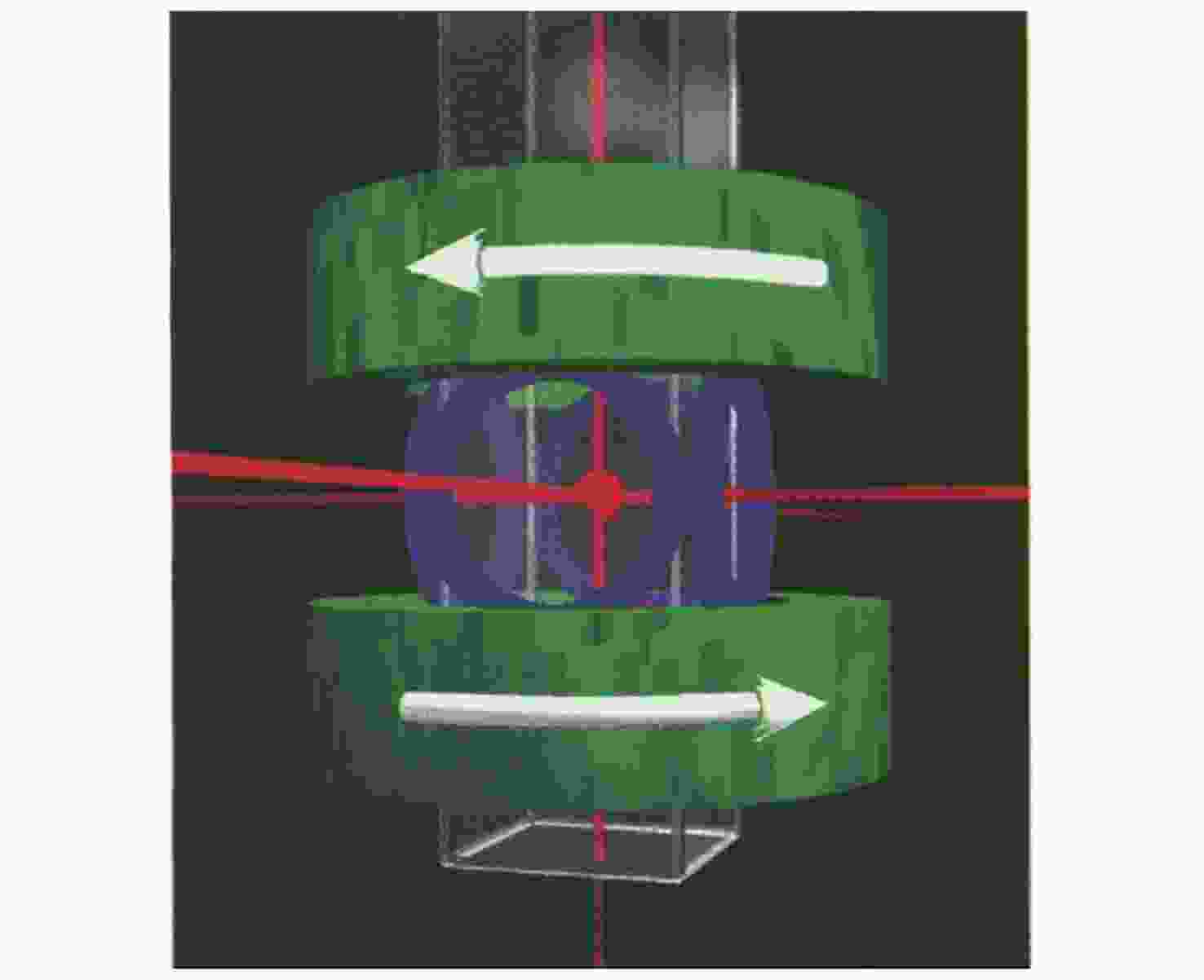
 下载:
下载:
